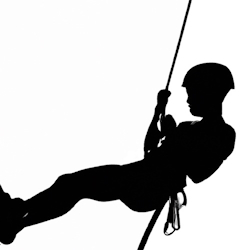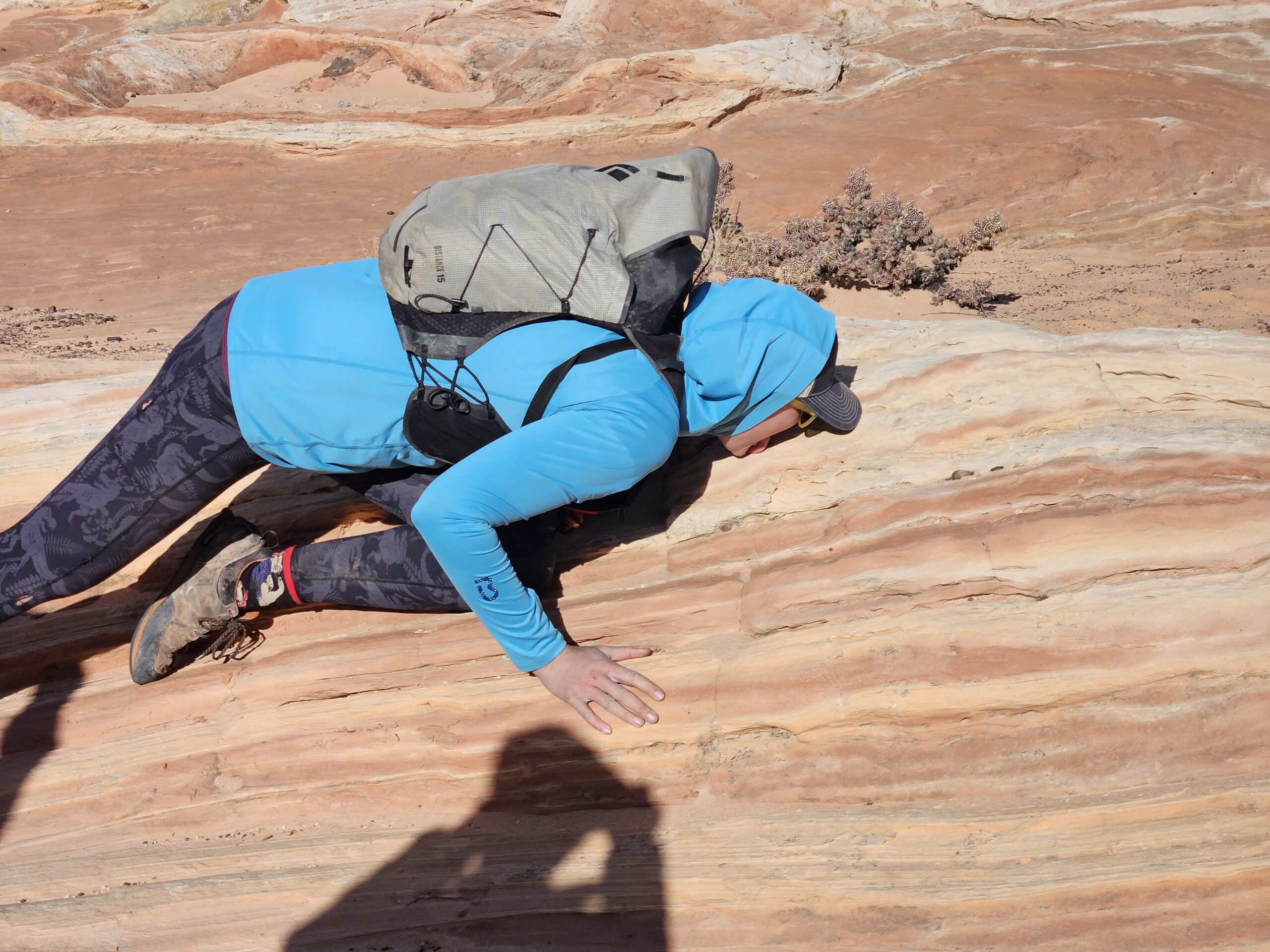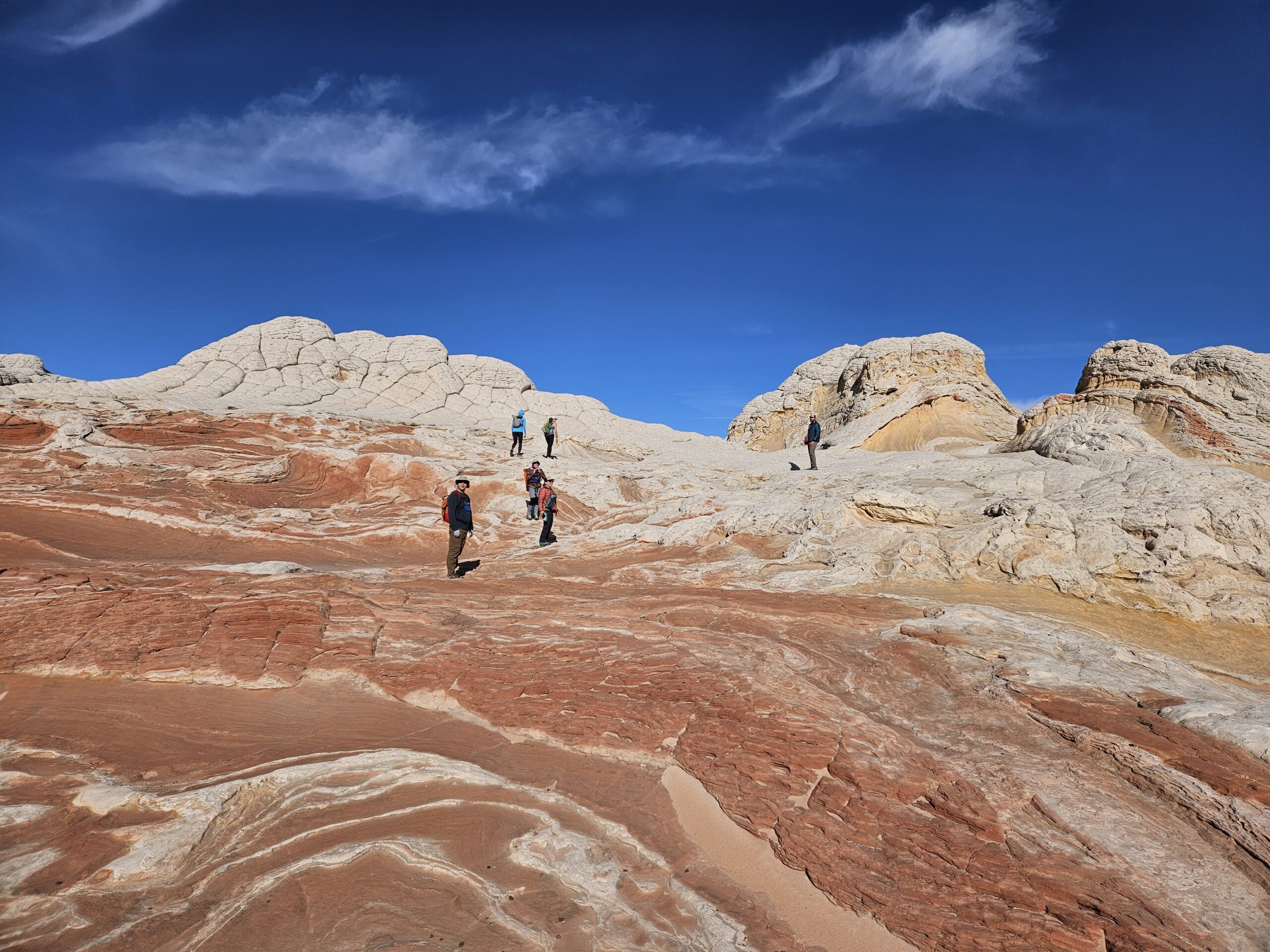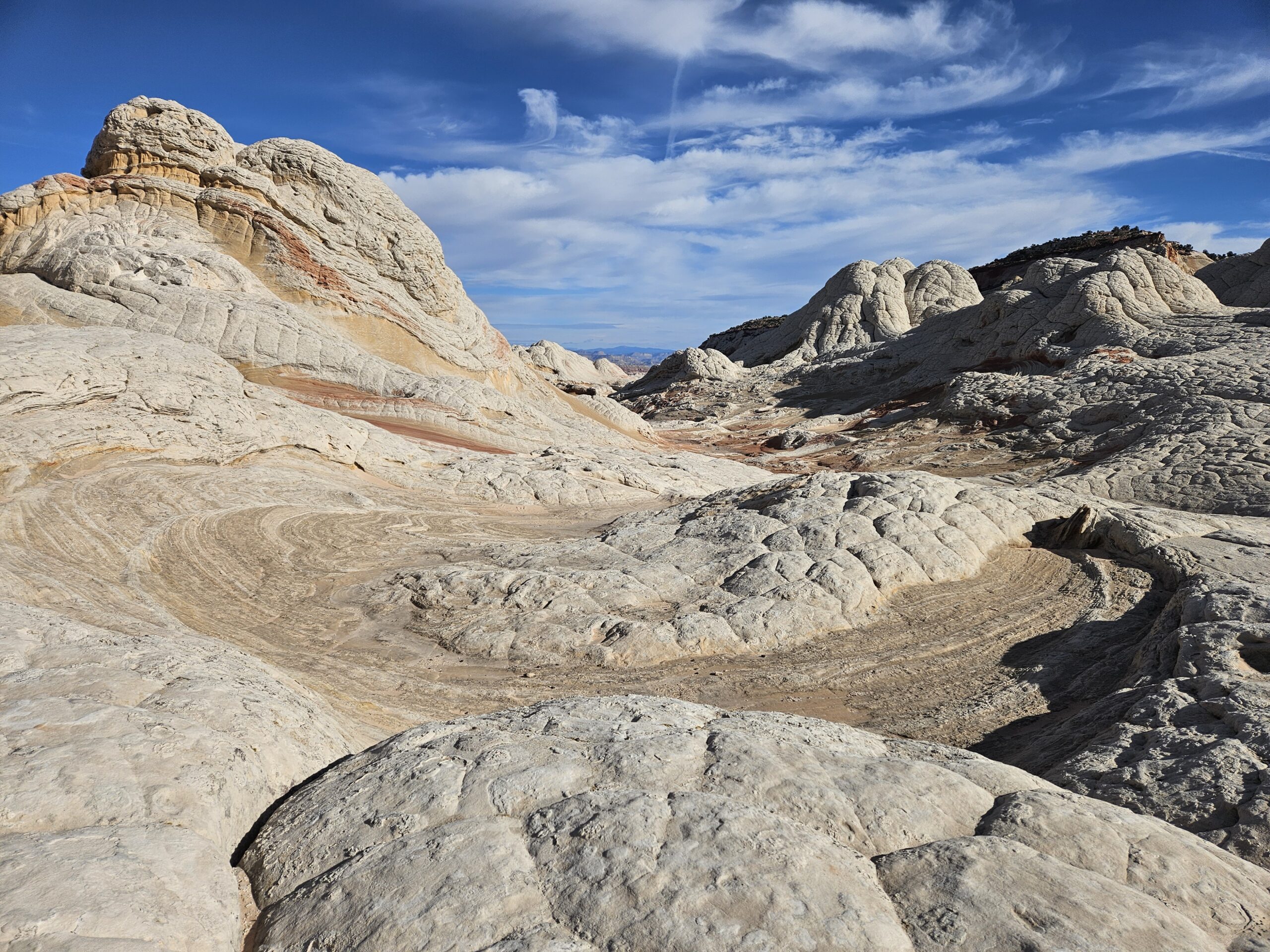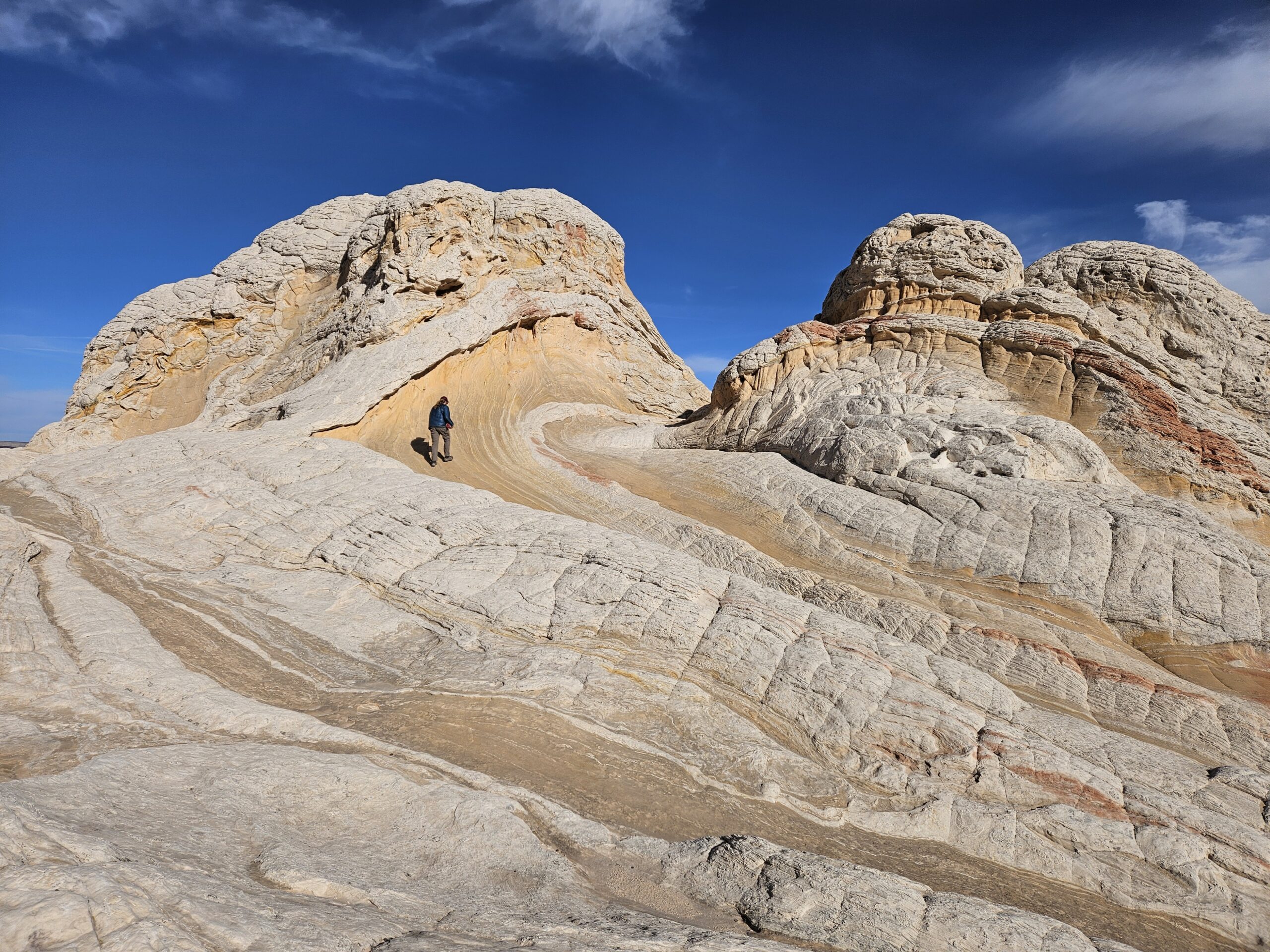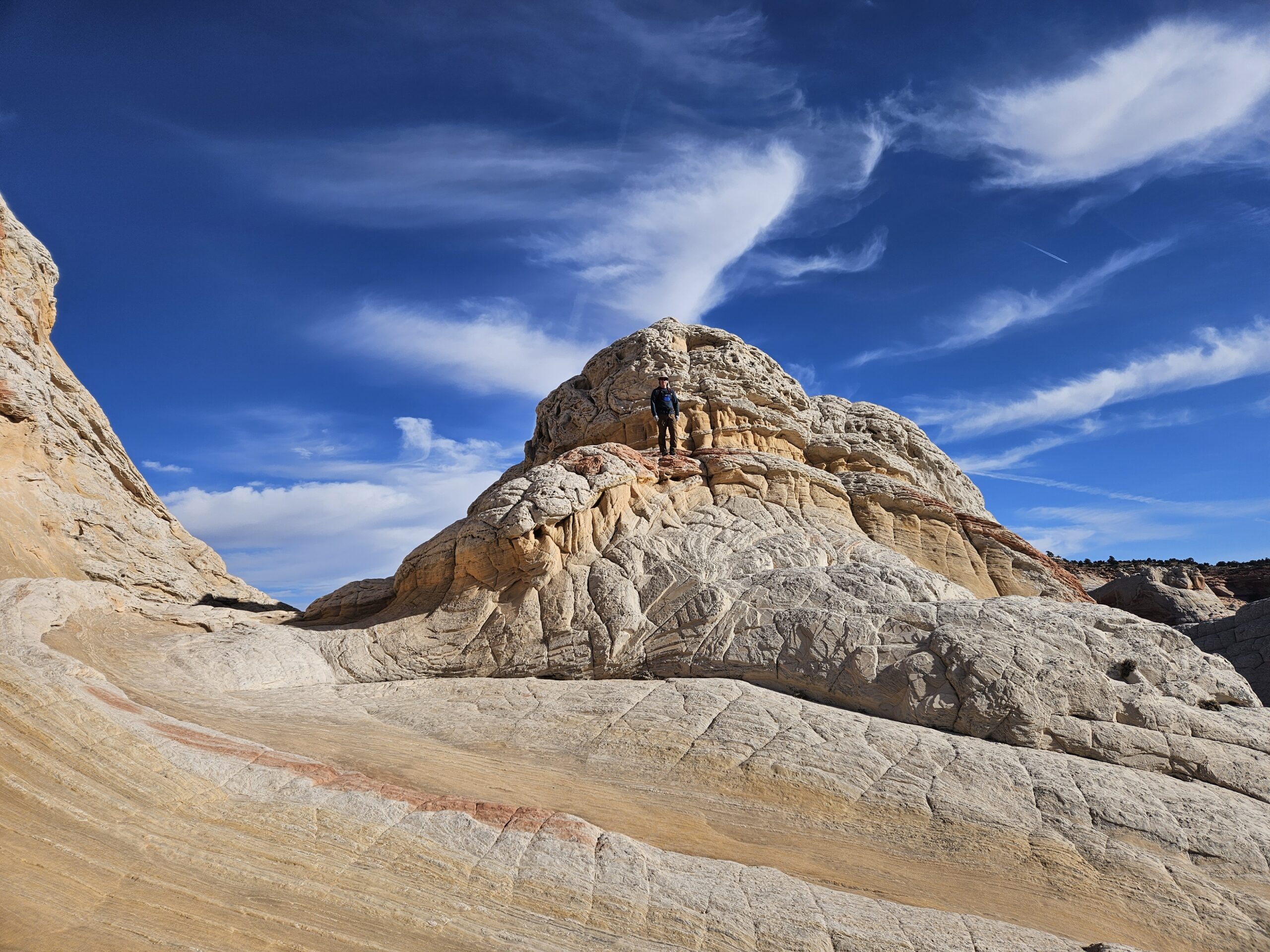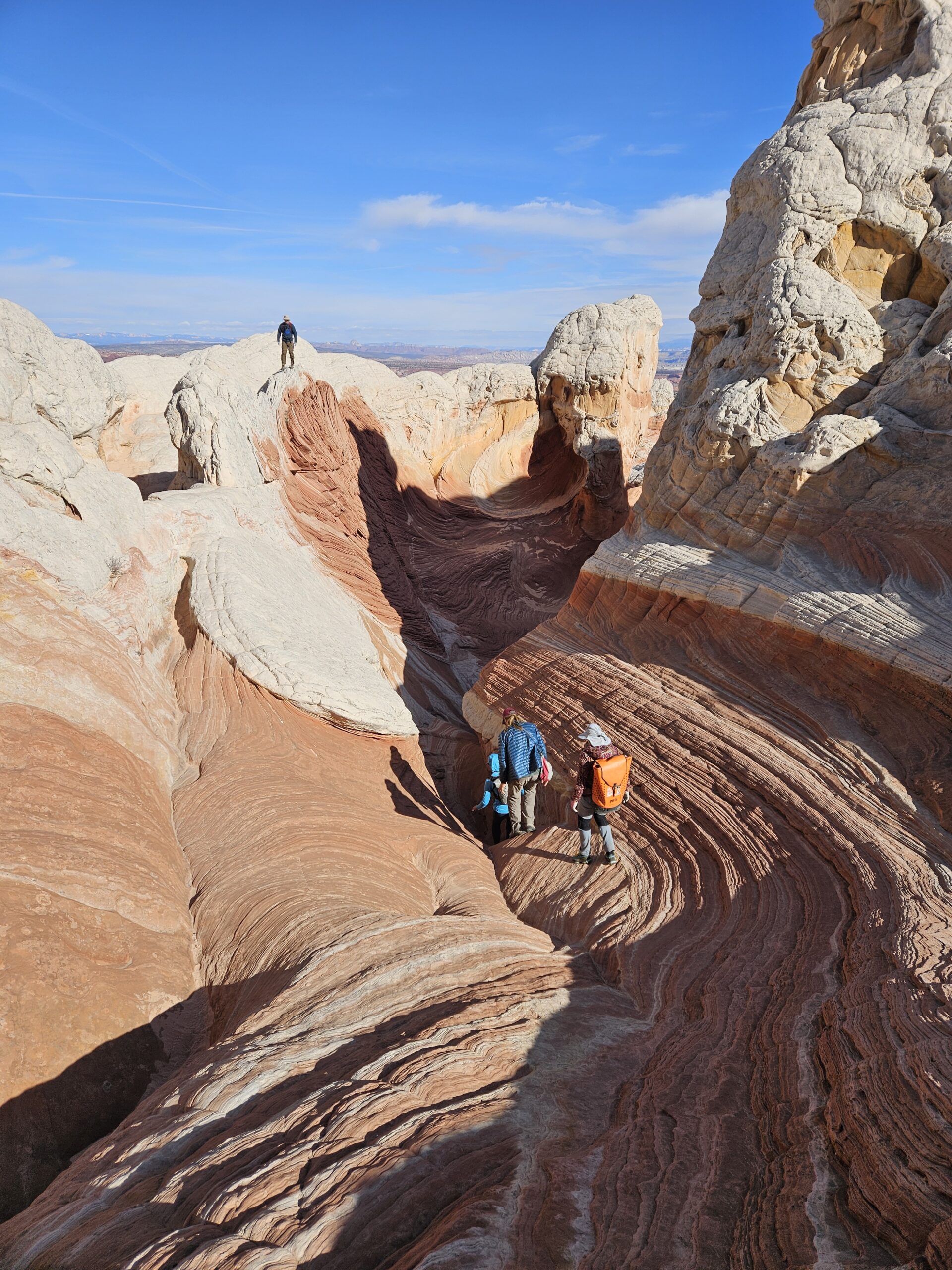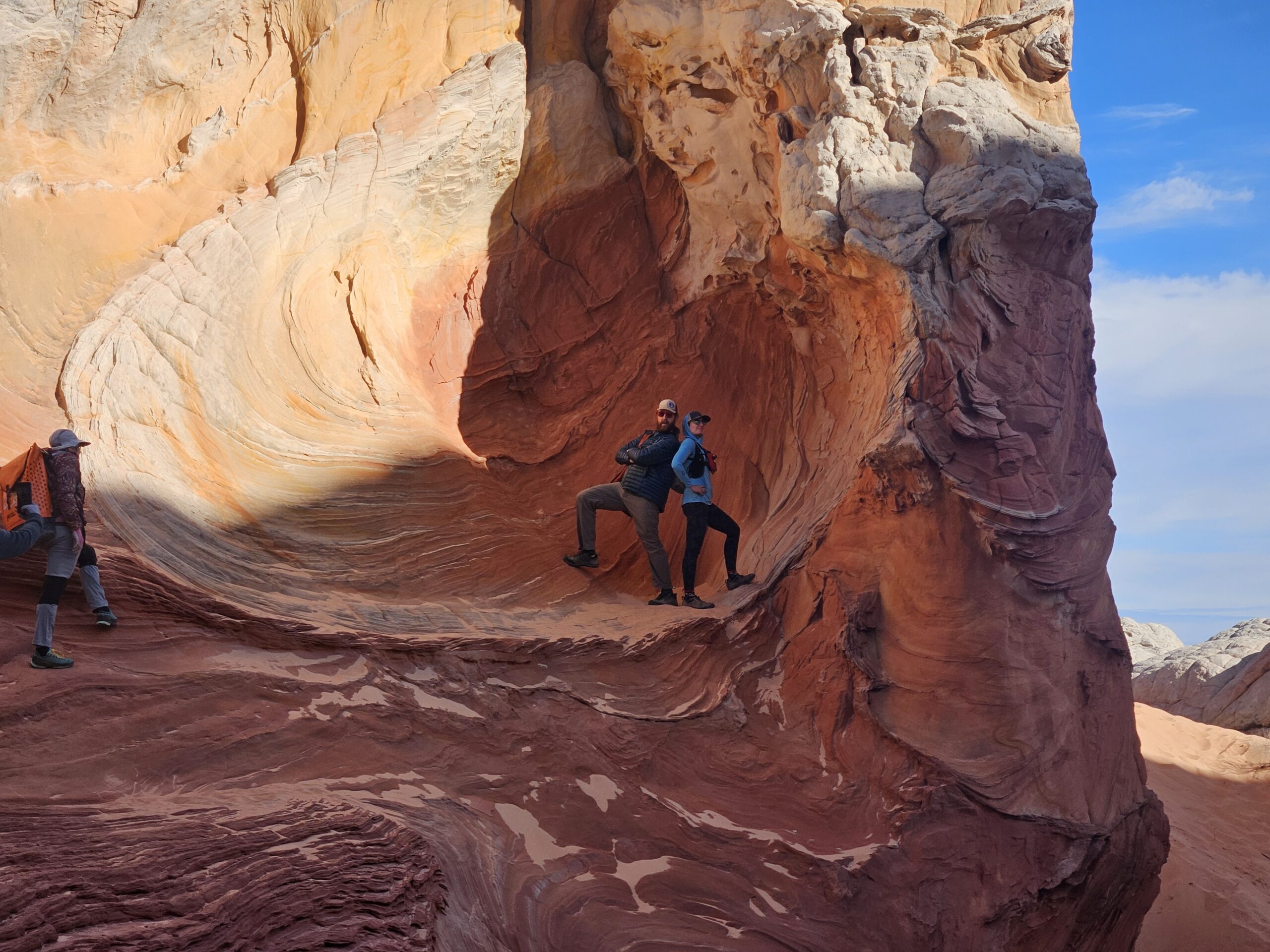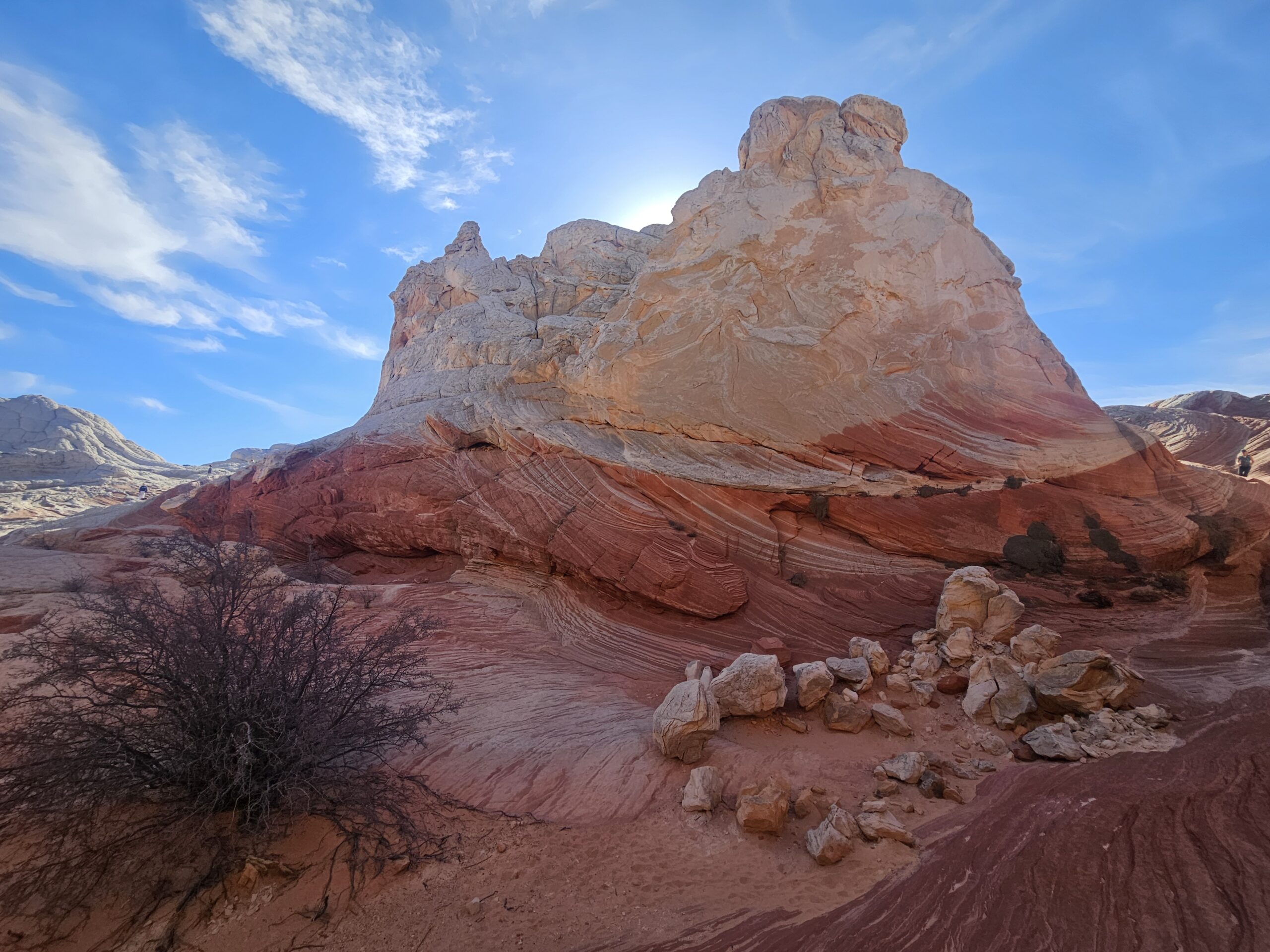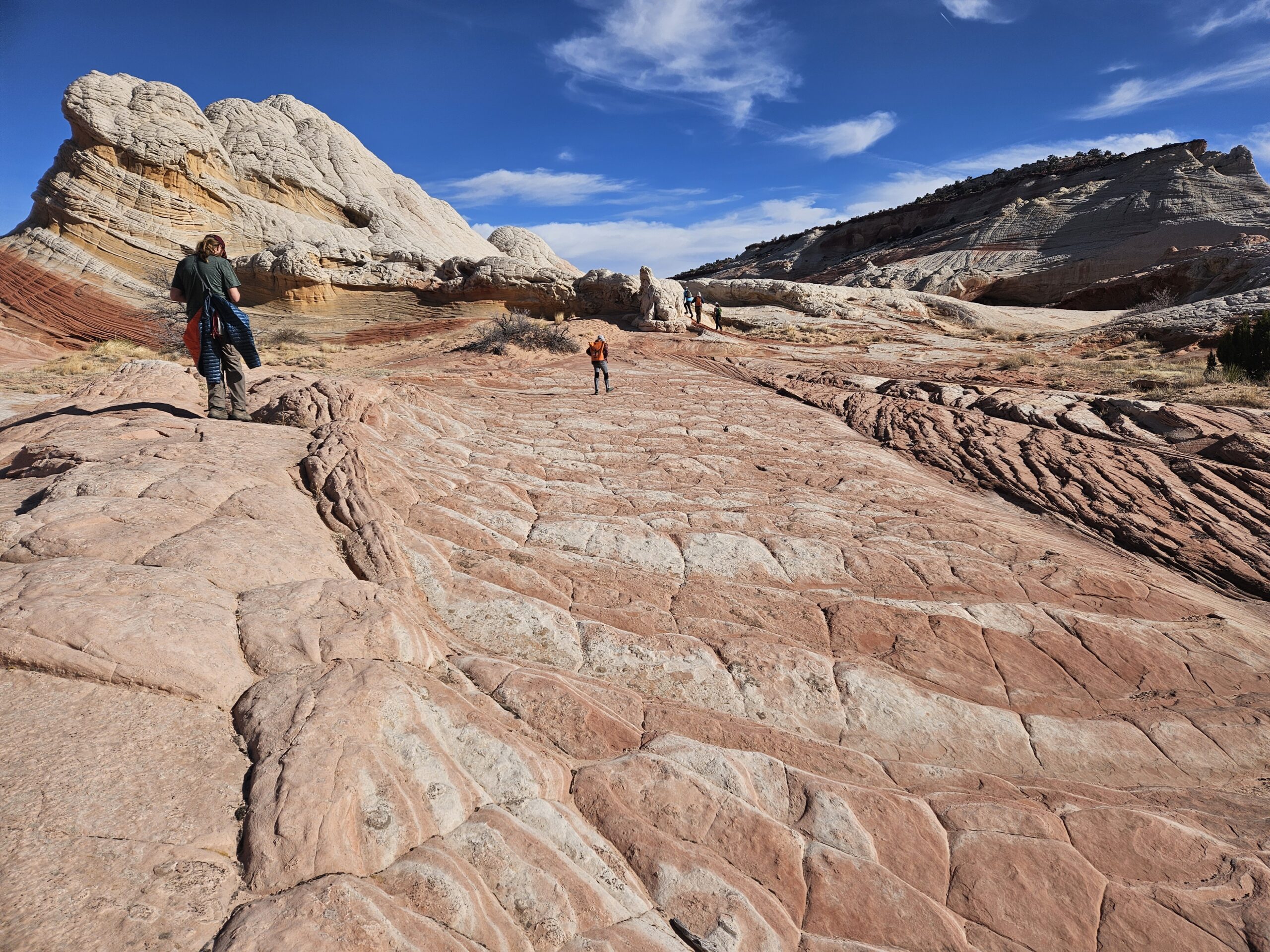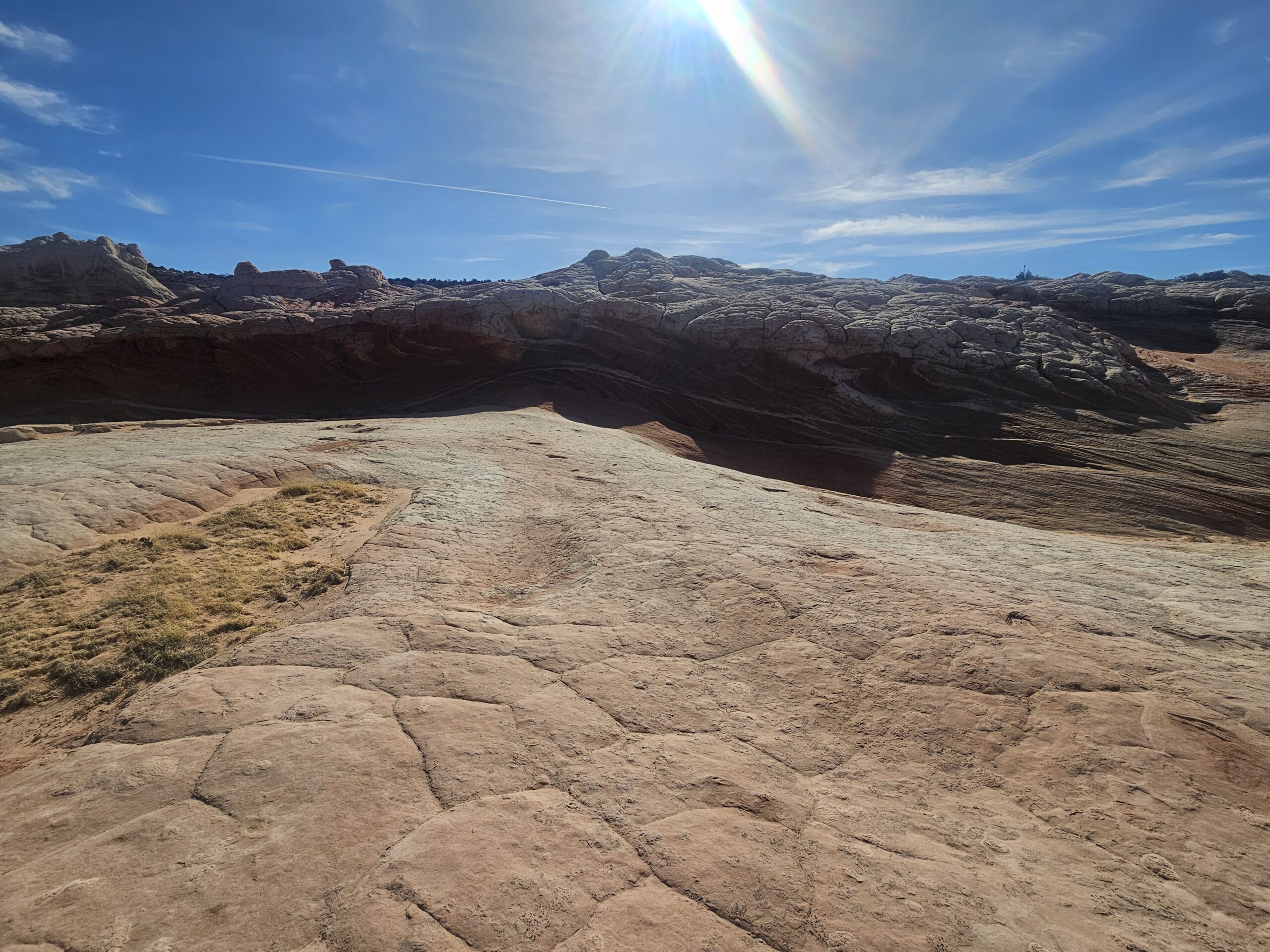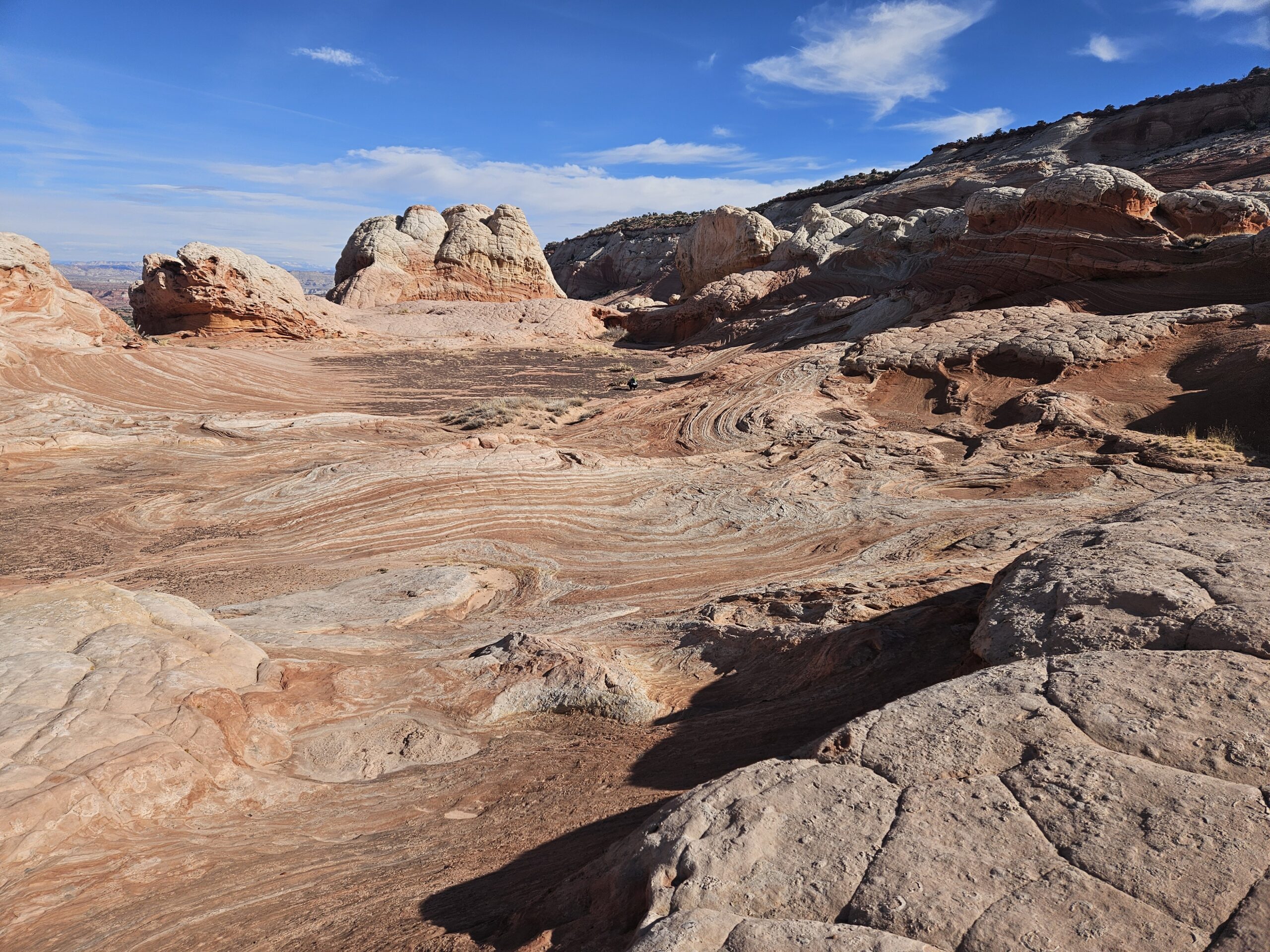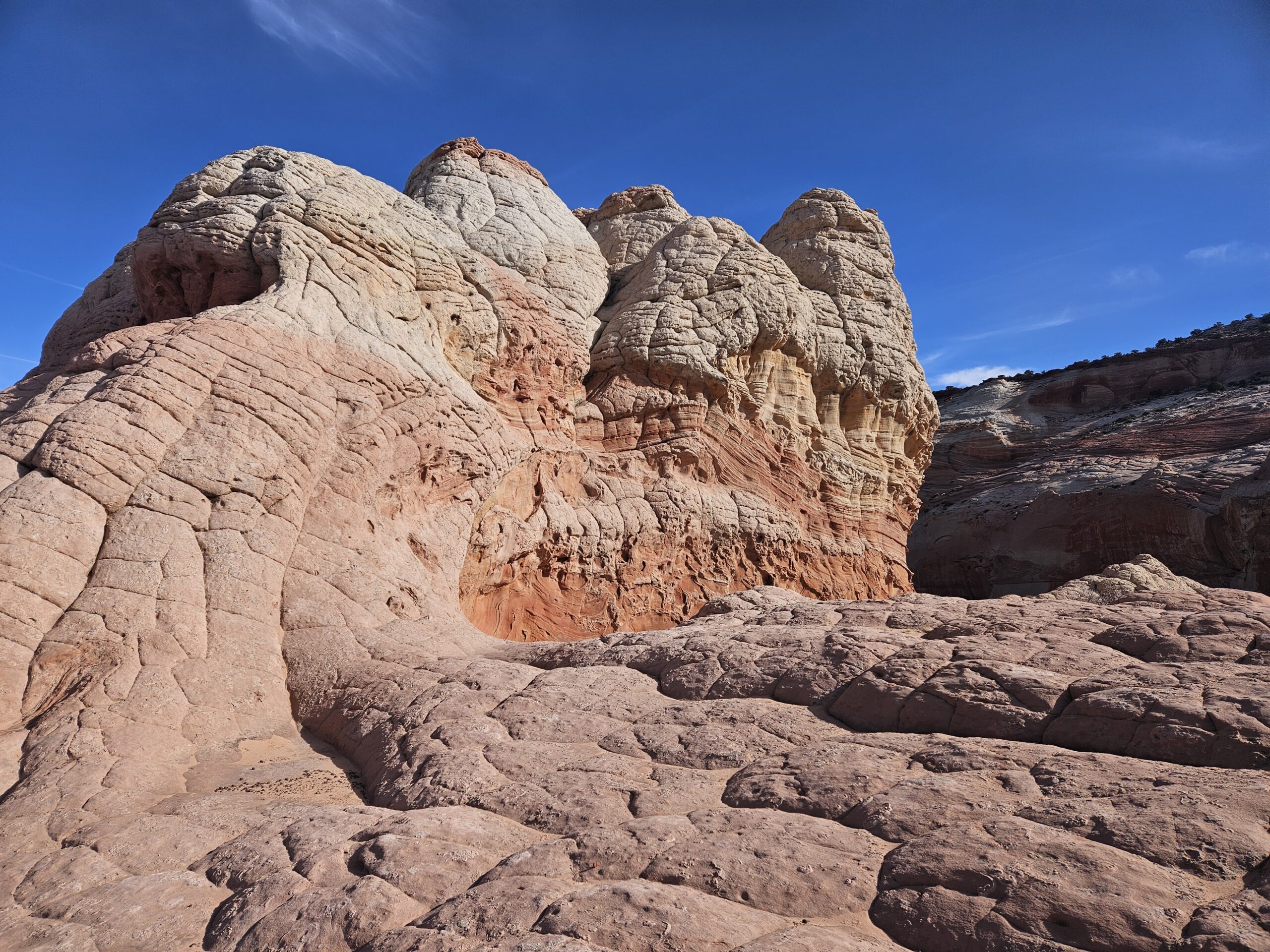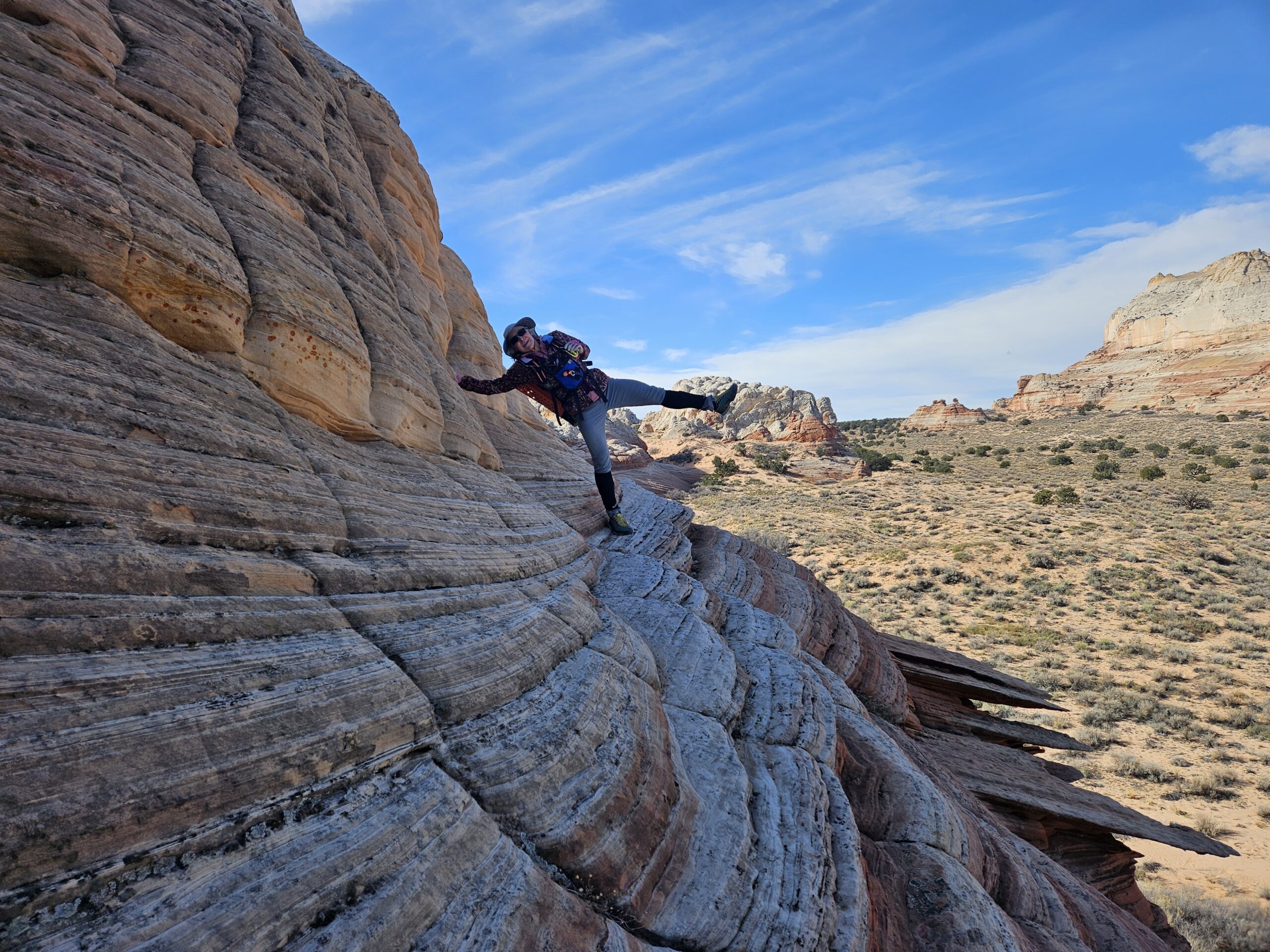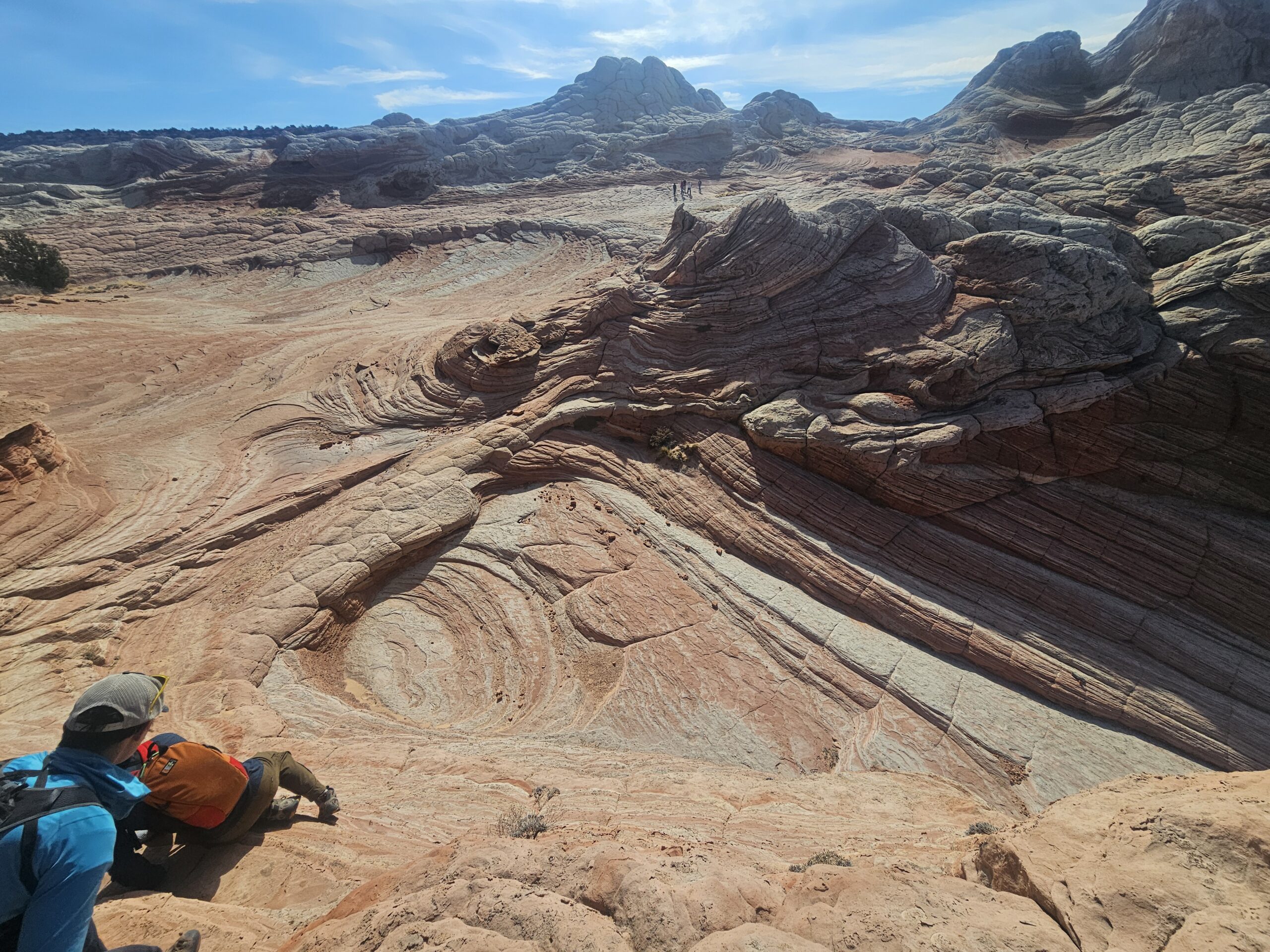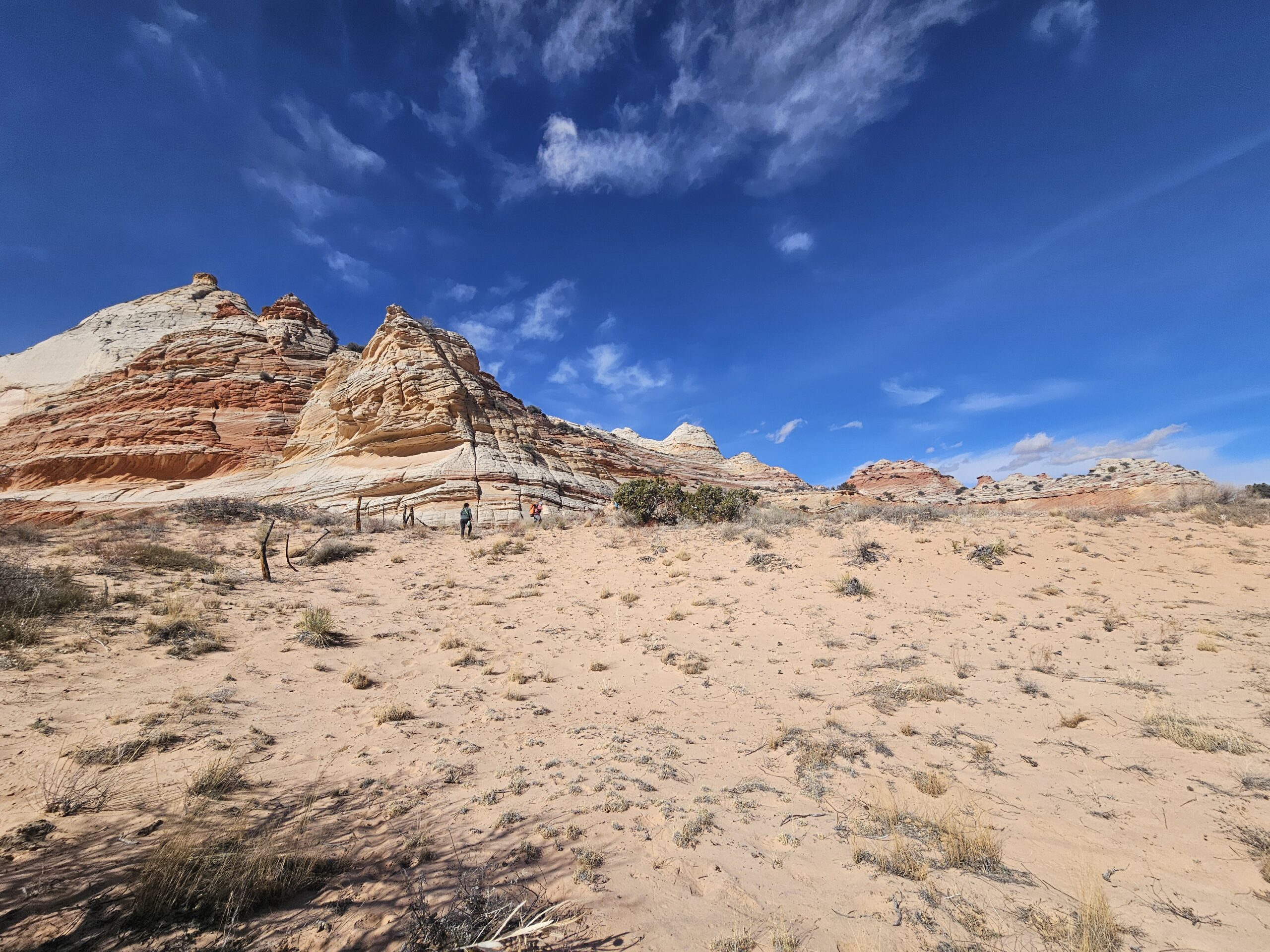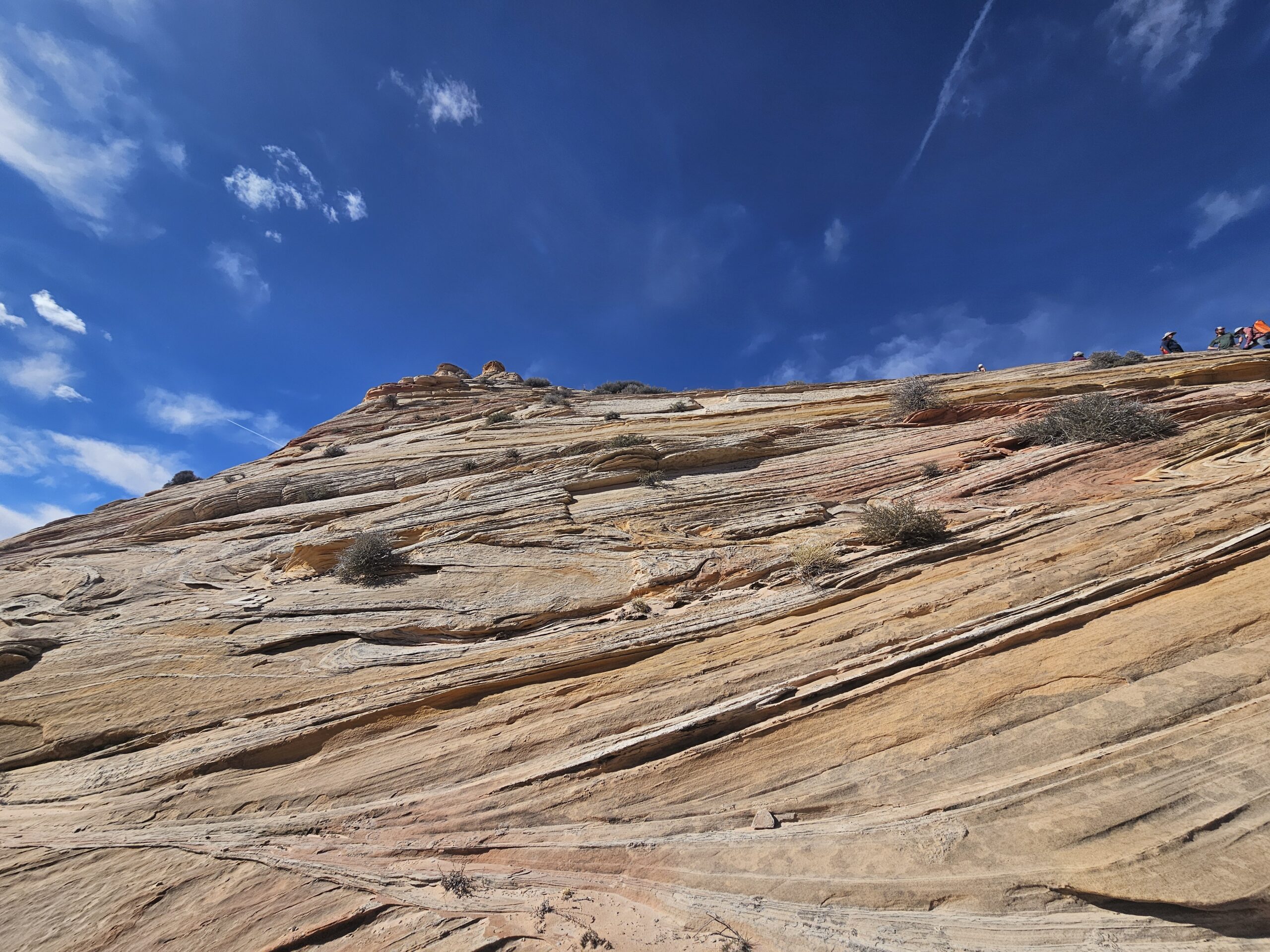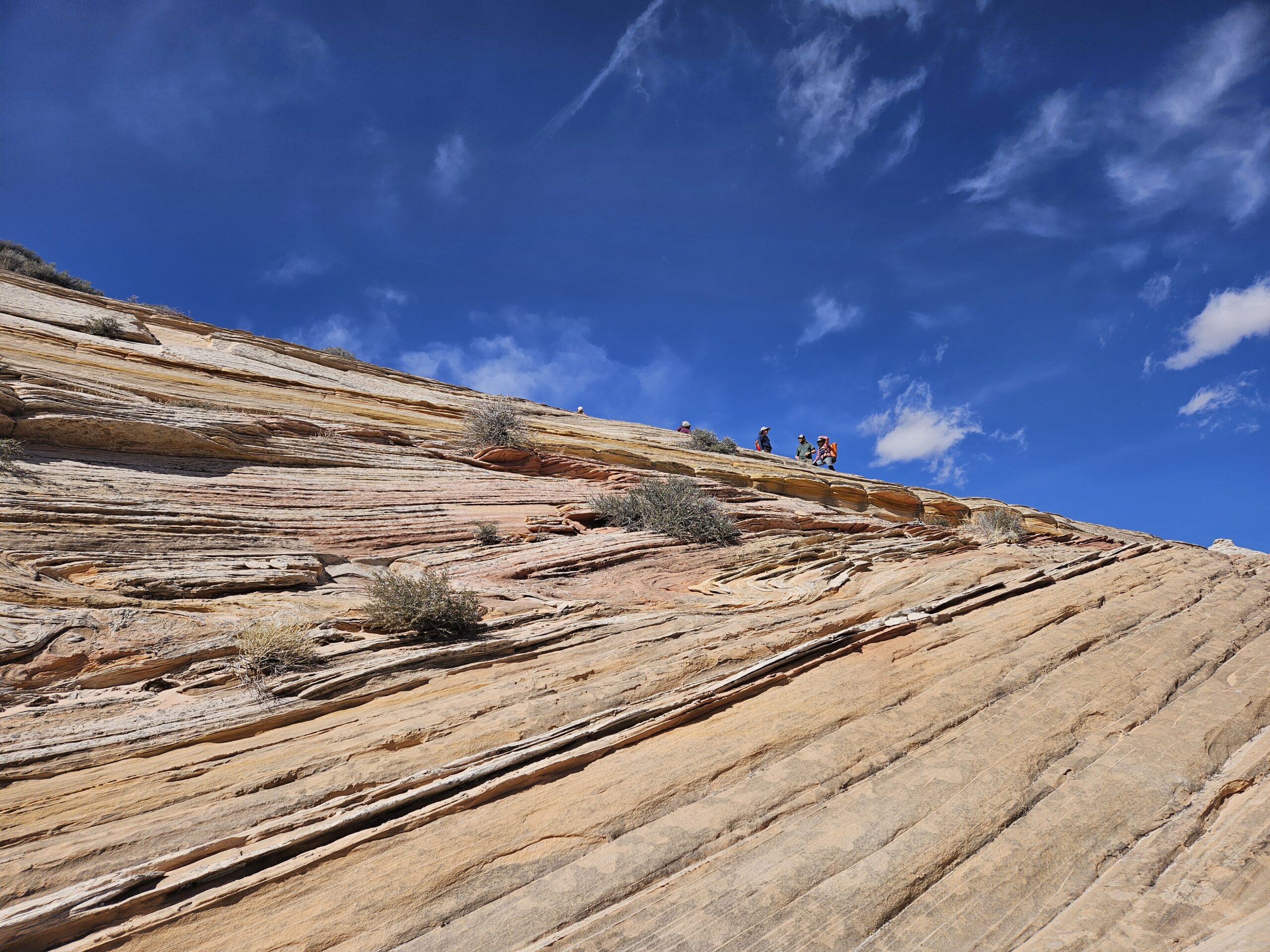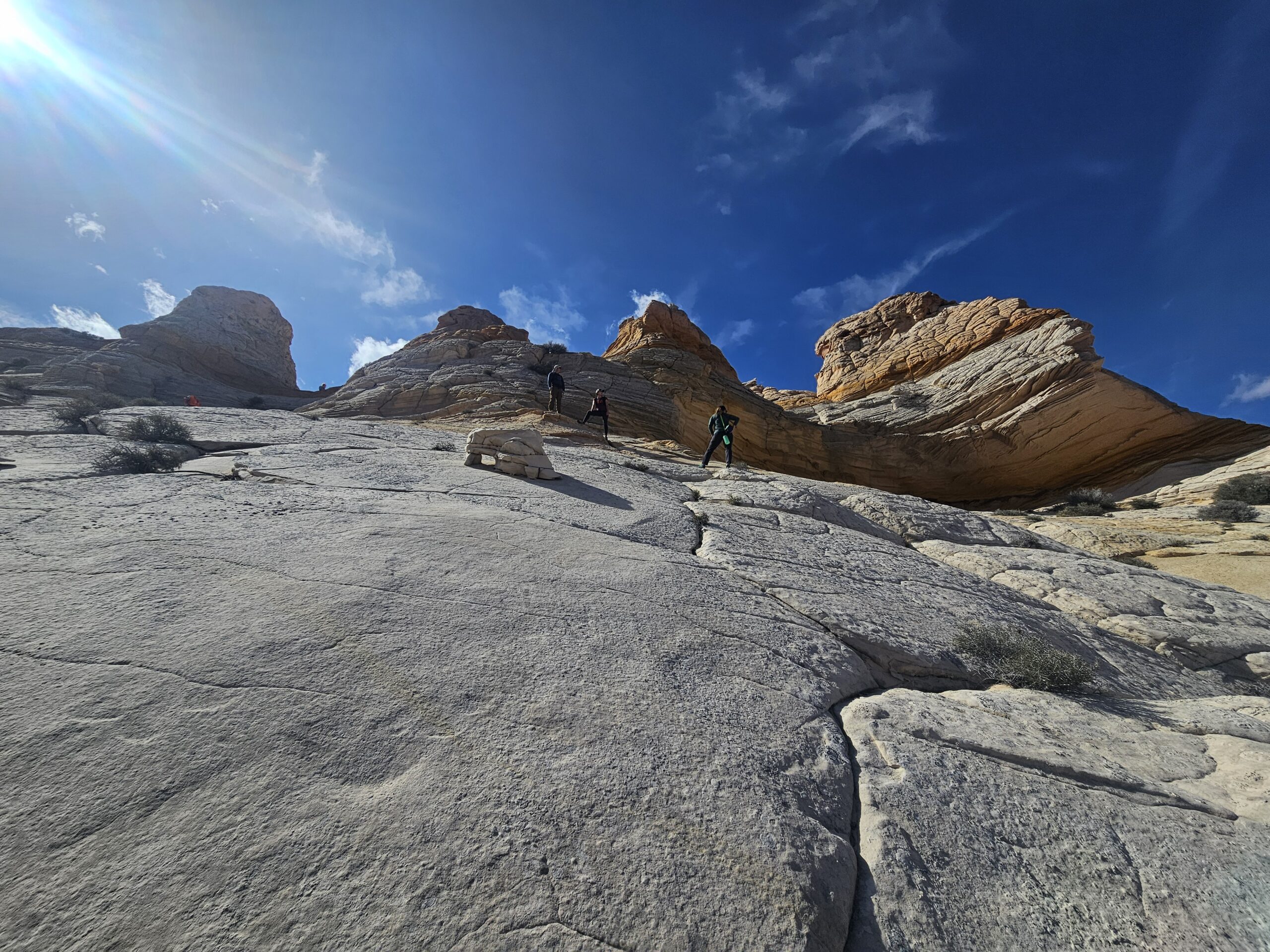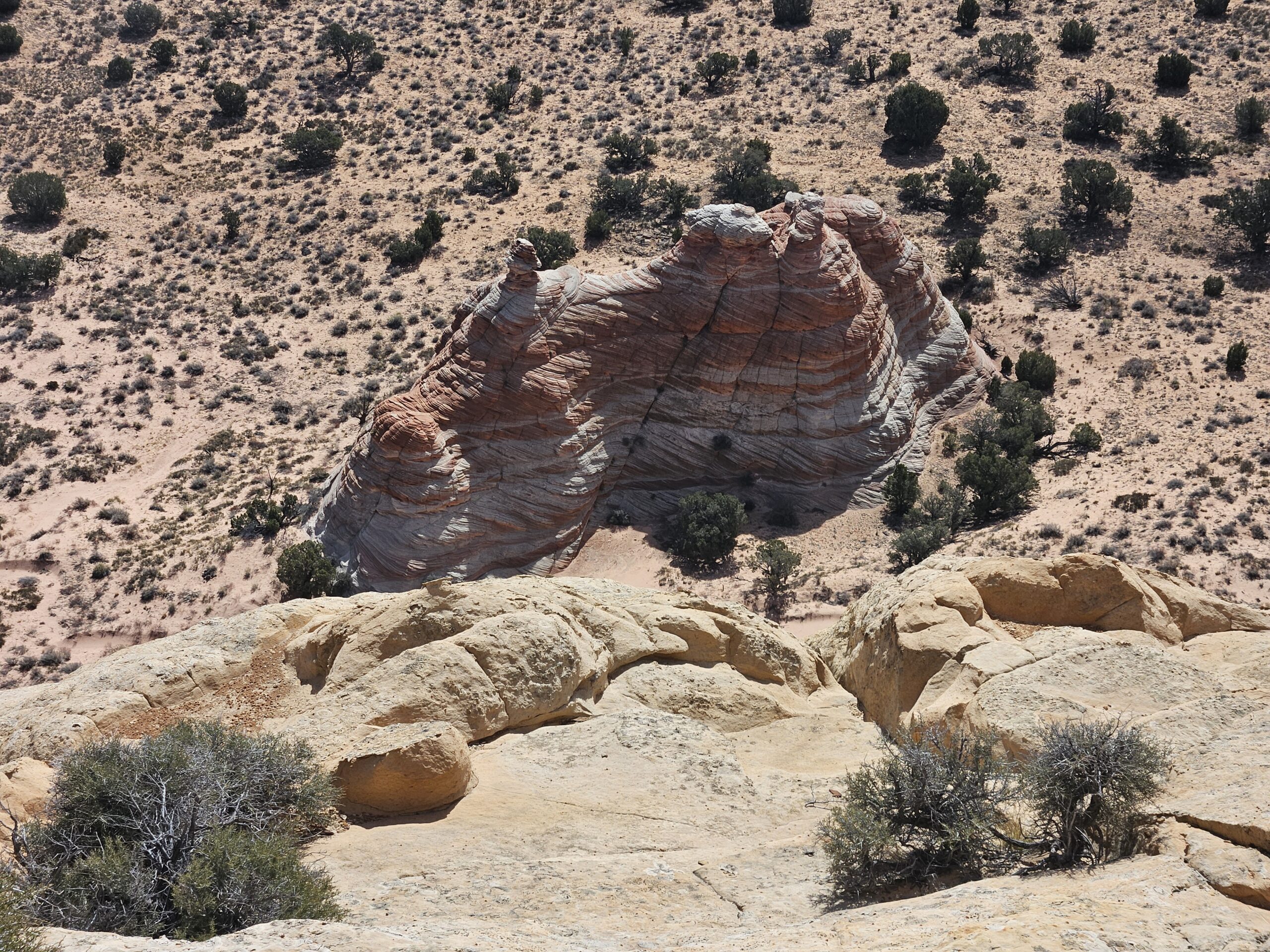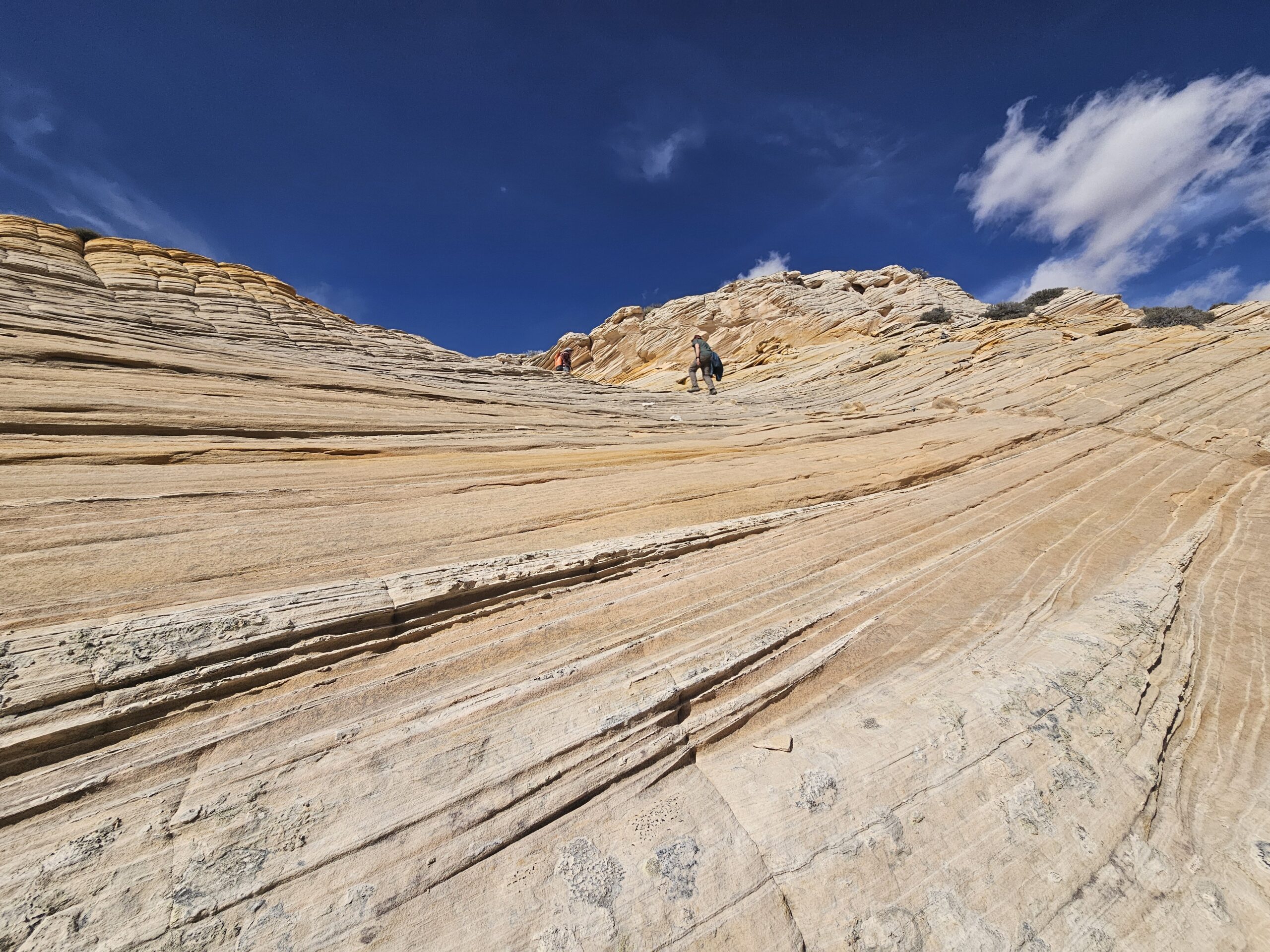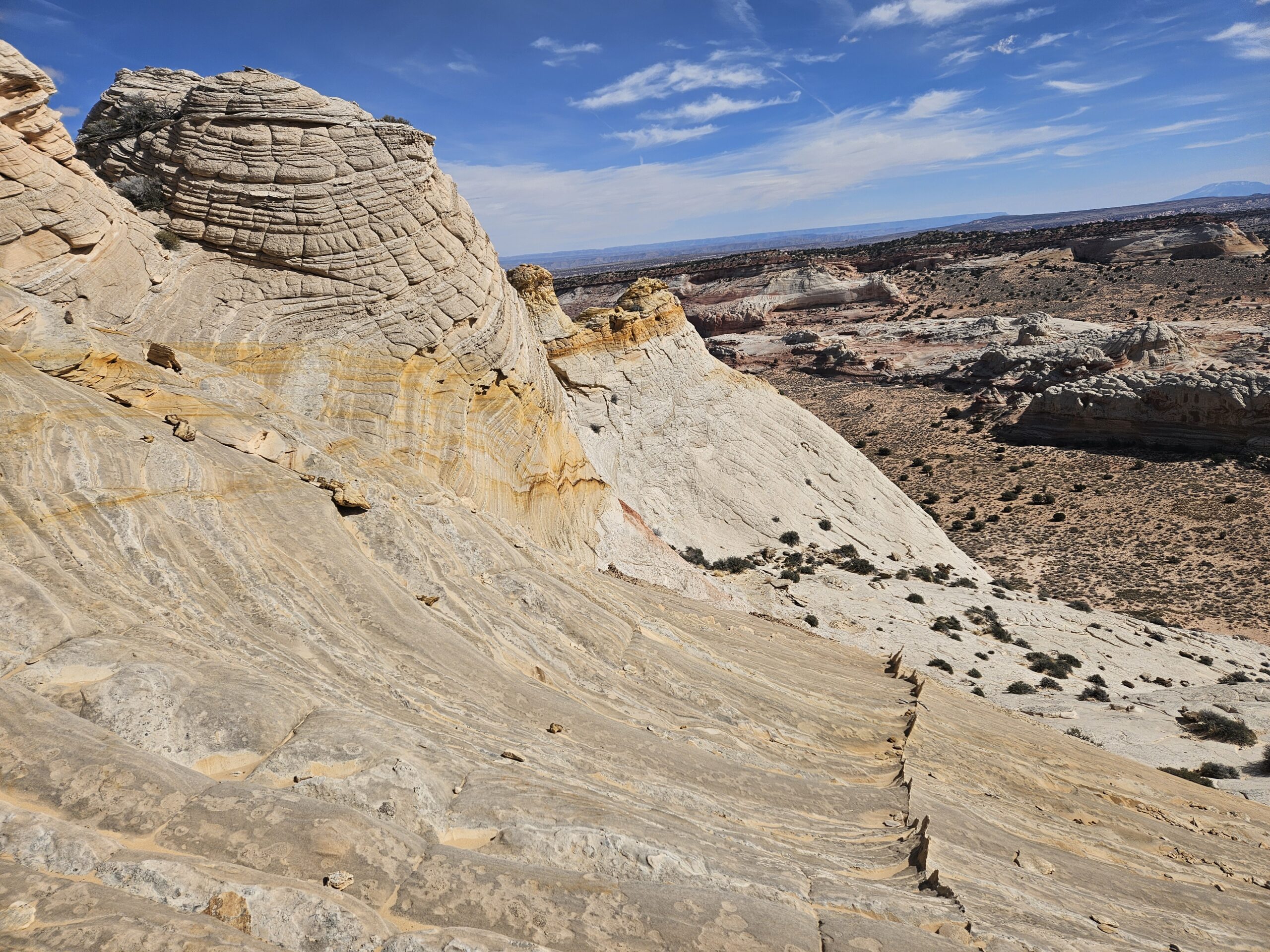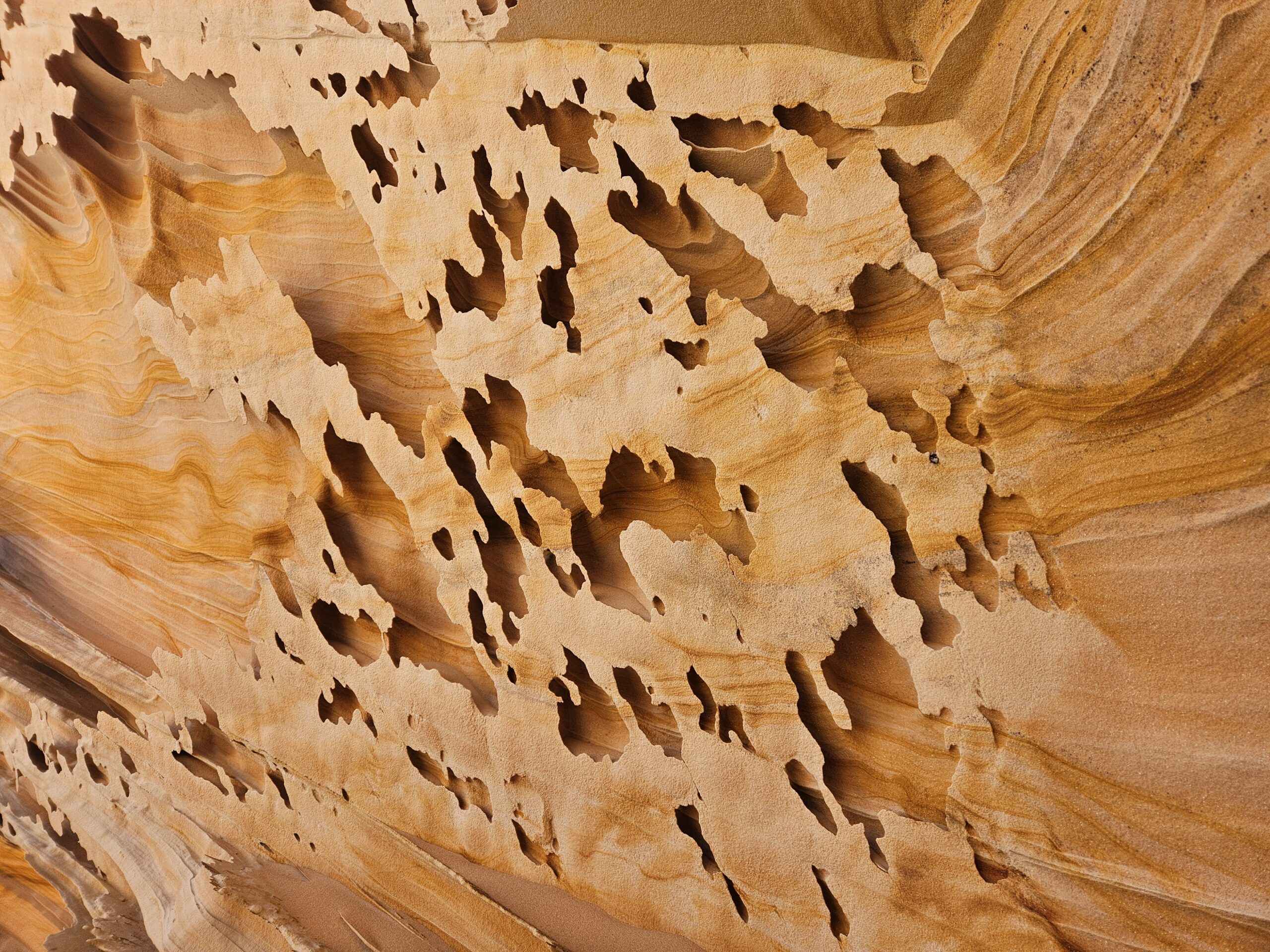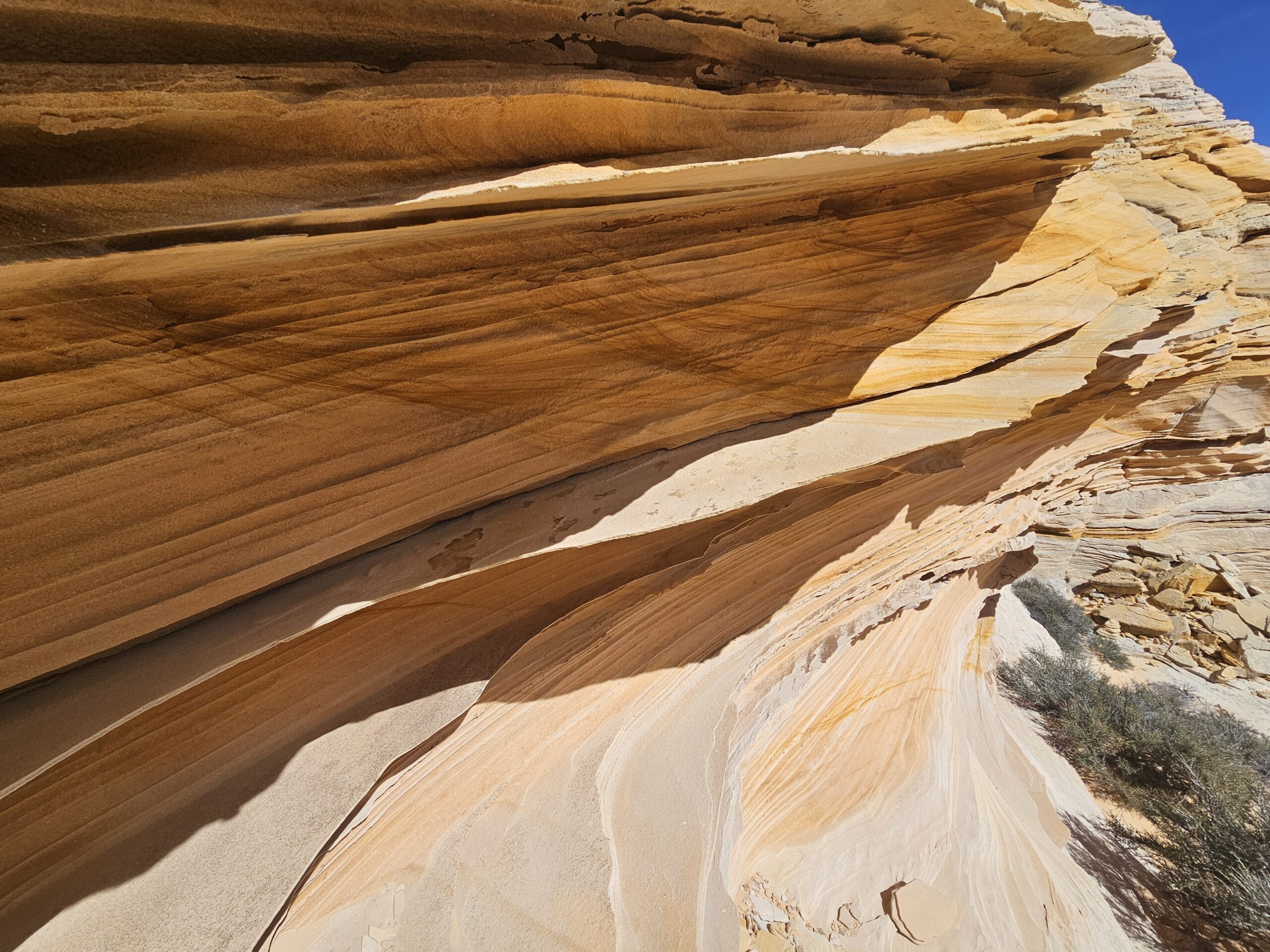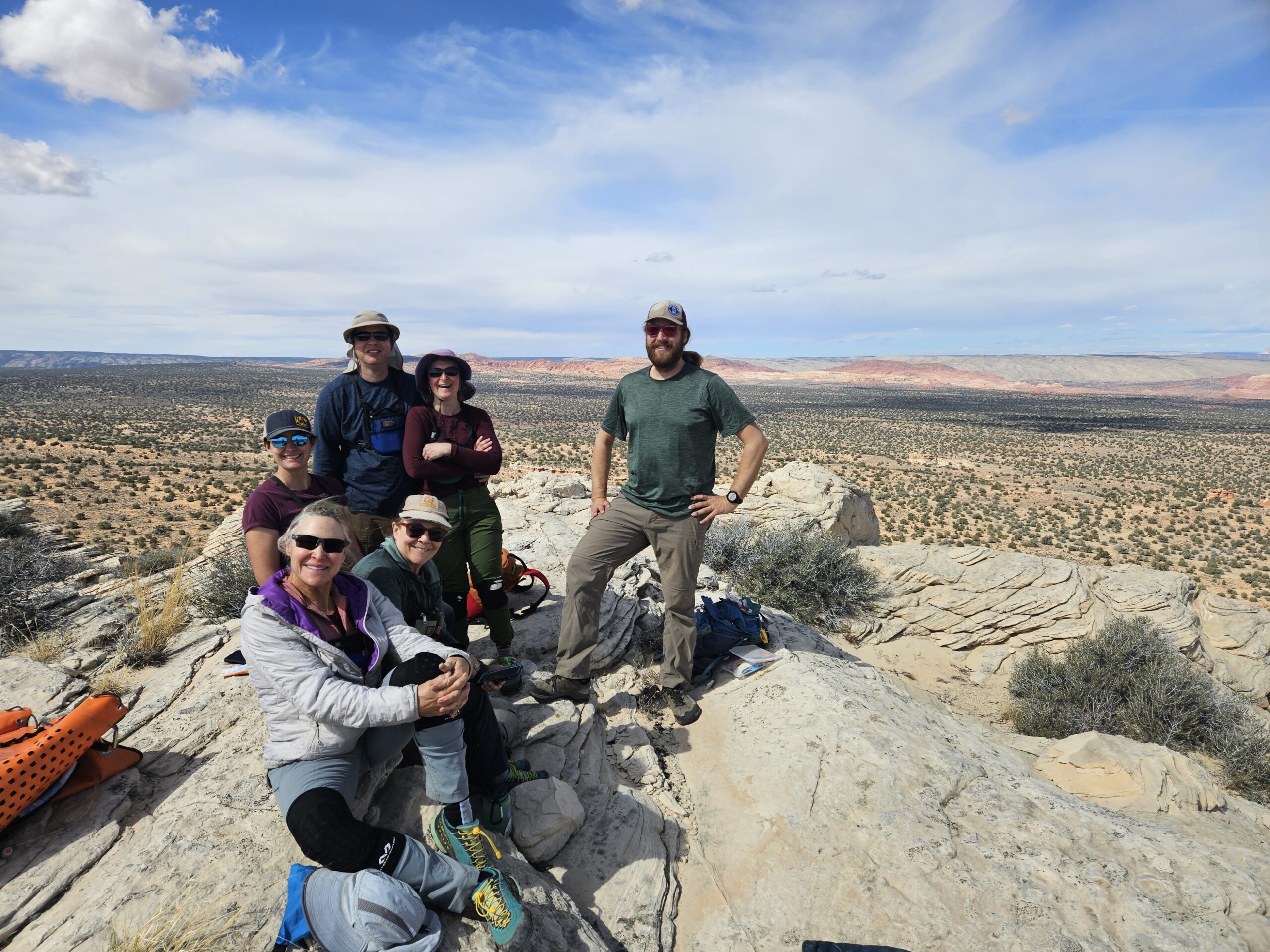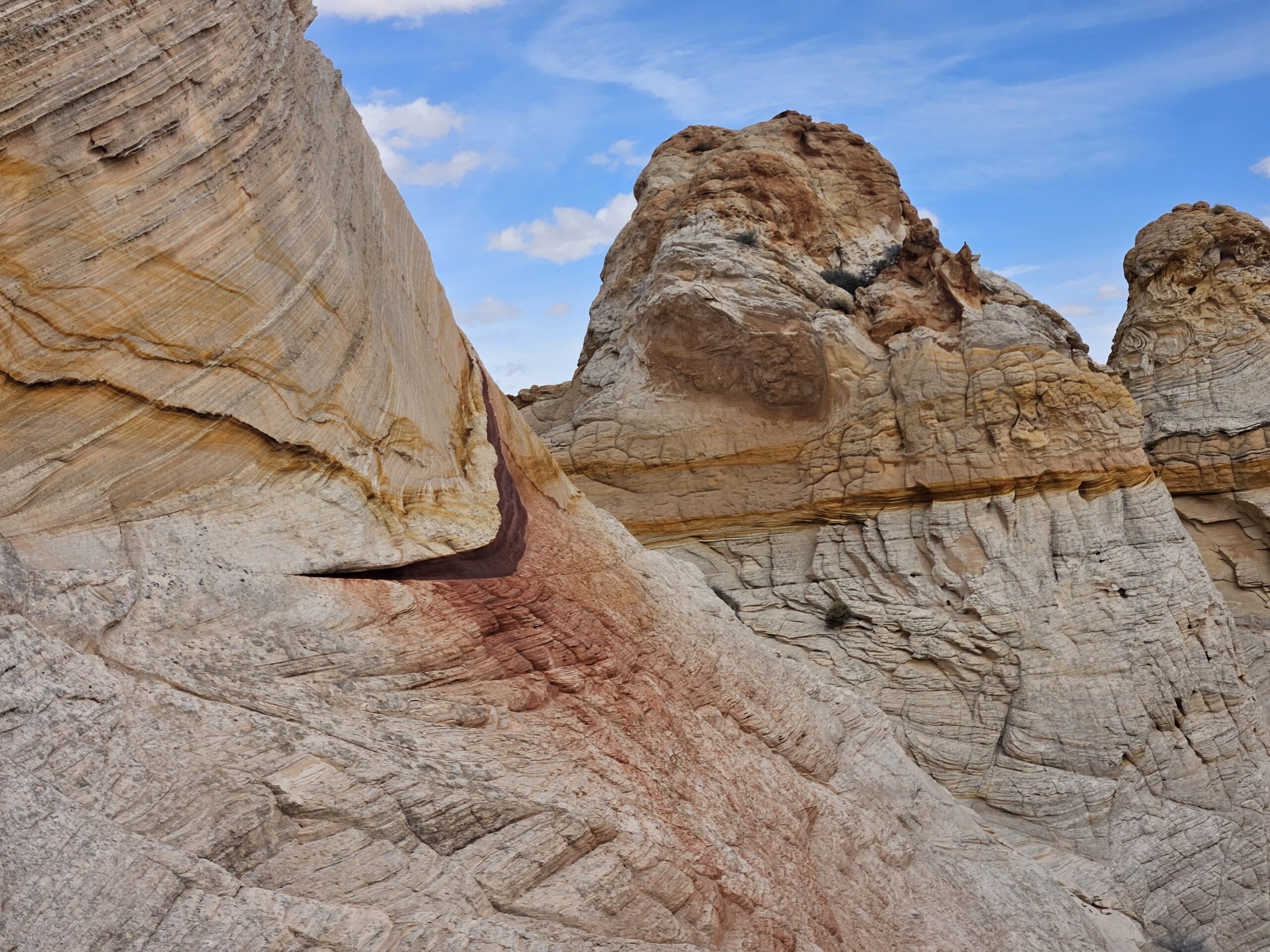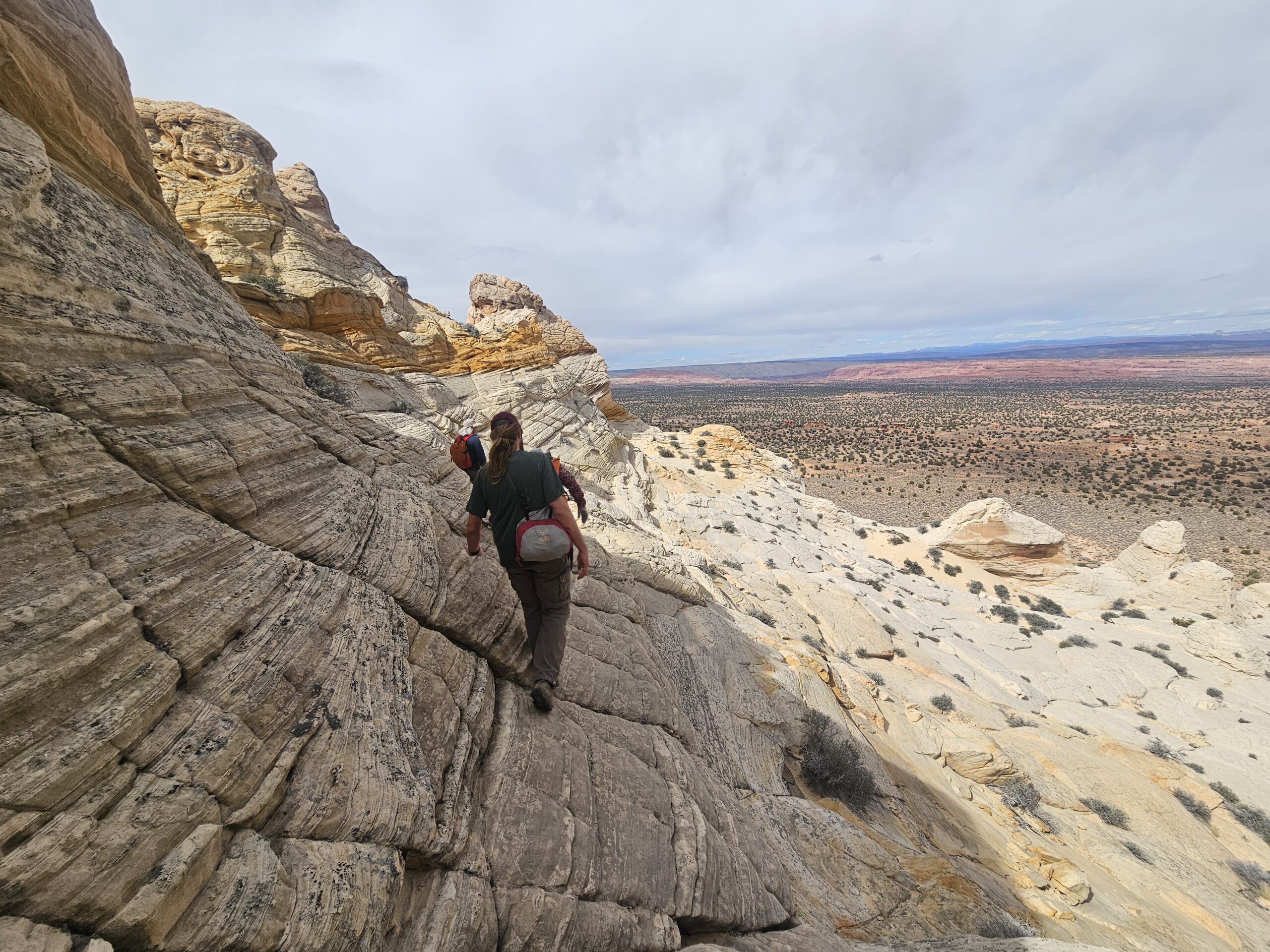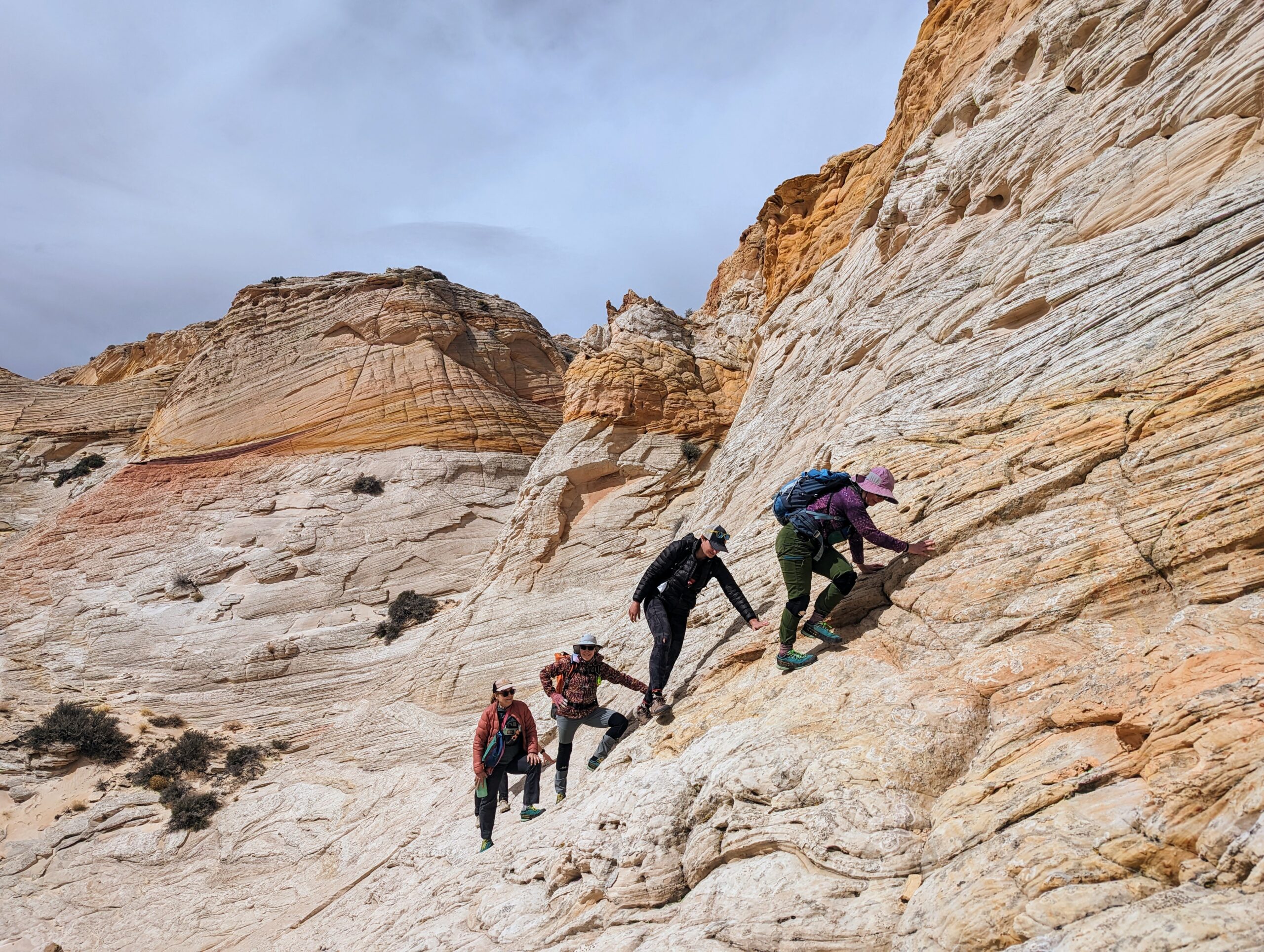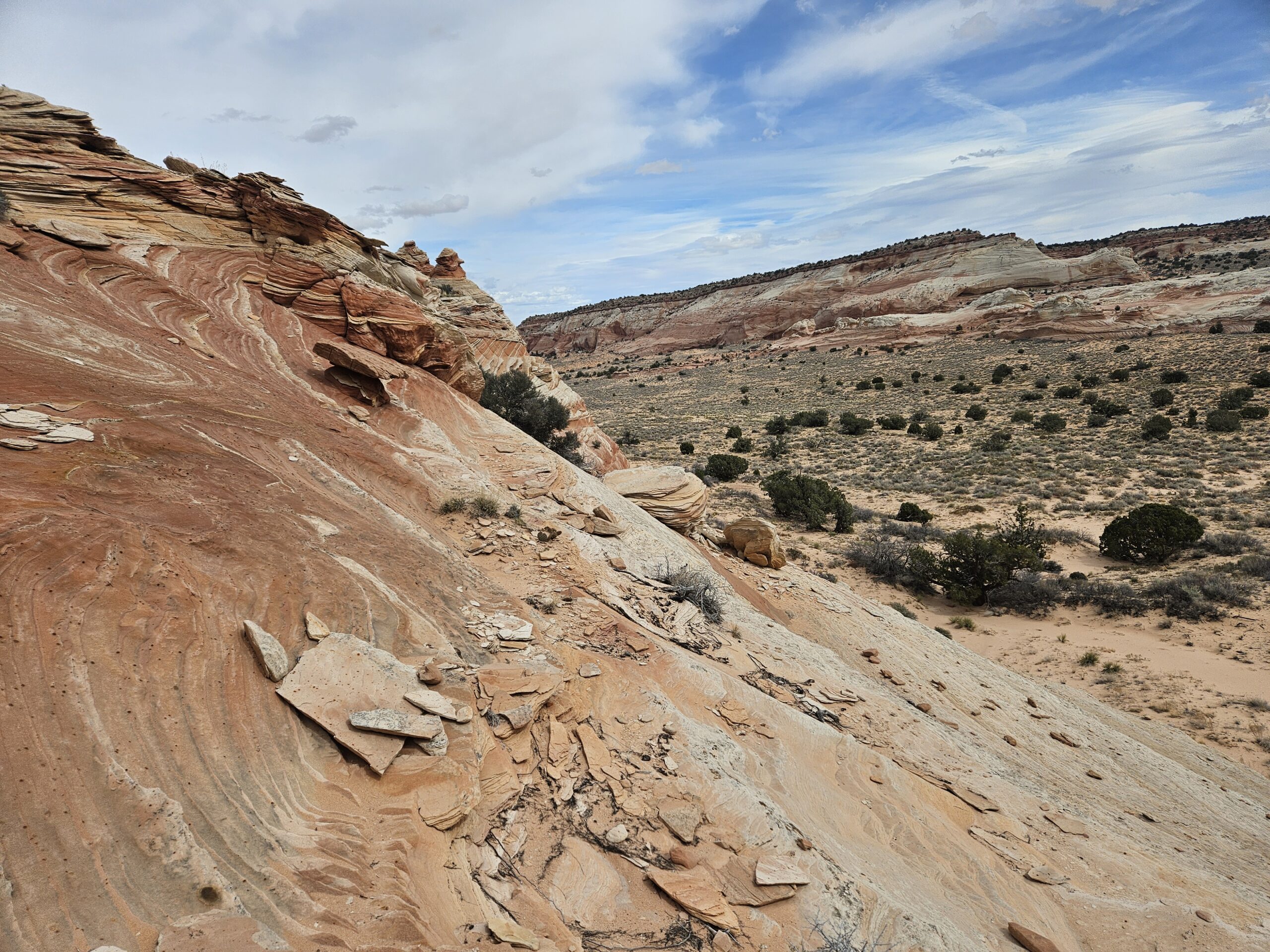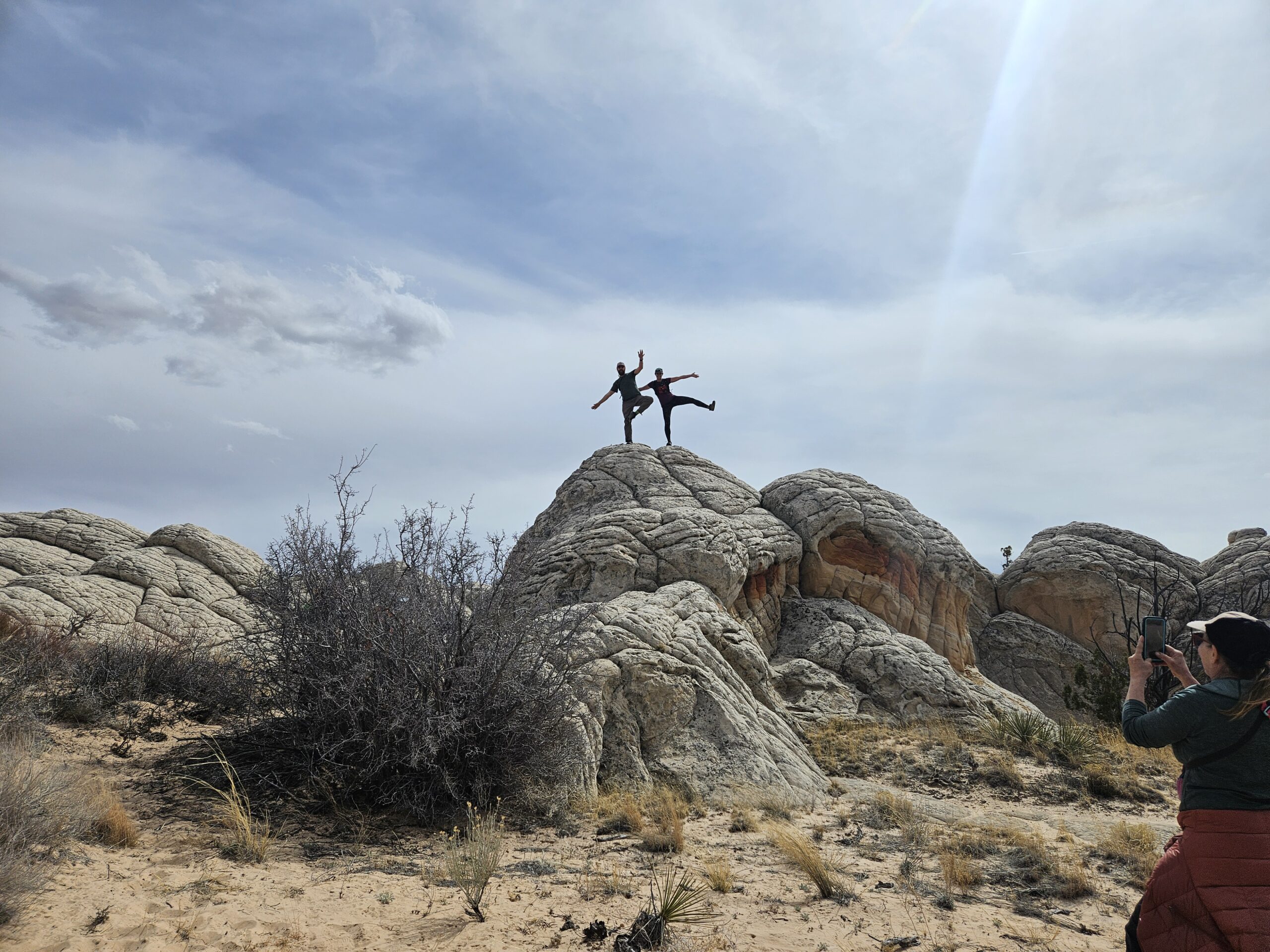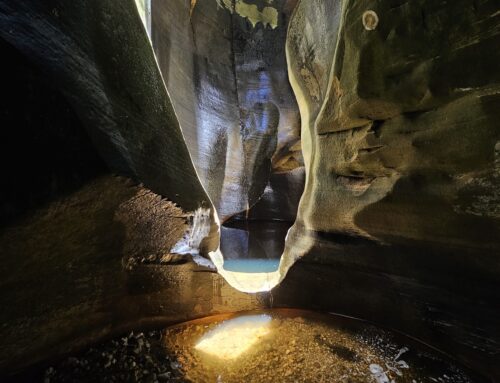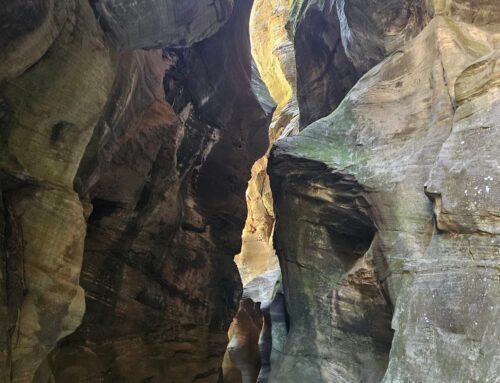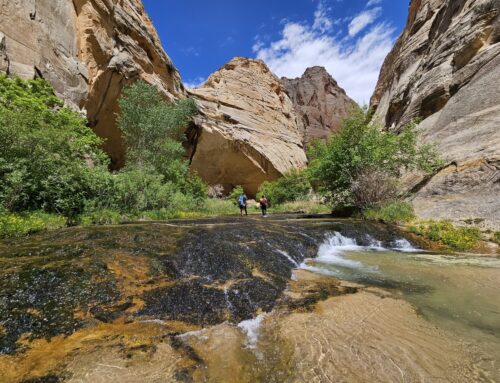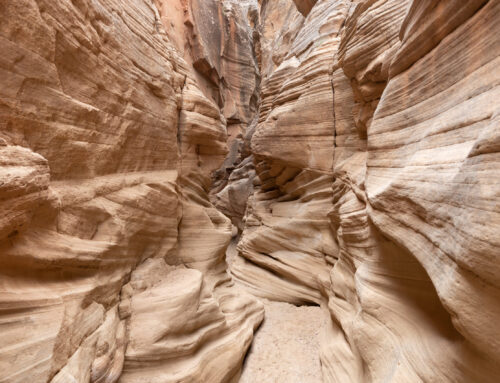The Vermillion Cliffs National Monument, on the border or Utah and Arizona, is one of the greatest geological treasures in the United States. Deep within its heart, hidden in a maze of sandy roads are three incredible sites, all located within several miles of each other: The Wave (North Coyote Buttes), South Coyote Buttes and White Pocket. Of these three sites, White Pocket is the only one currently accessible without a permit. Many years ago, on our first trip to the southwest, my husband and I booked a tour of White Pocket and it proved to be the gateway drug that led to us eventually moving to southern Utah. So be careful! A trip here might just change your life 😊. Located in a fairly small area, you may want to allocate three to four hours for the hike. The drive might take two or more hours each way.
To reach the area, you will need a high-clearance four-wheel drive vehicle as roads are very sandy and not maintained. Please do not try to make it there in an AWD vehicle as it is risky at best (ask me how I know!). As of winter 2024, there are large signs posted directing people to White Pocket and it’s much easier to find your way around. This is a great link to a PDF from the BLM with specific directions on how to drive to White Pocket: https://www.blm.gov/sites/blm.gov/files/documents/files/AZ%20White_Pocket_PDF.pdf
The best time to go is when the weather isn’t too hot (avoid the summer months) and sand is damp after snow or rain. However, be aware that House Rock Valley Road is unpaved and many parts have a bentonite clay substrate, which becomes impassable when wet, even with four-wheel drive. You do not want to be stuck here if rain or snow is in the forecast. There are zones with no cell phone service during the drive and if something happens, chances are high you won’t be able to call for help. Be prepared to change a tire, bring extra water and food and be sure to have a traction board or mat with you for deep sand. It’s also a good idea to air down your tires before commencing the sand drive. If all of this scares you, there are many tour companies in the area who can take you on a tour and do all the driving for you. There are no facilities at the trailhead so be prepared to pack everything out.
Our latest visit was in March of 2024, where we had the pleasure of introducing this wonder to some of our out-of-state canyoneering friends who were visiting for spring break. The roads were the best we’ve ever seen, hard packed and easy to navigate. There is a deep sand hill right before you arrive at the site, so the key here is not to stop in the sand, but to drive through at a reasonable speed until you get to the parking lot. We got to see the entire area and finally summited the large butte behind White Pockets, a goal we’ve had for several years. There is fairly good cell phone service once you get to White Pocket, especially on top of the formations, so we were able to play the lottery for The Wave while we were there.
White Pocket is difficult to describe. There are large sections of white “cauliflower” sandstone (which sometimes turns a very unique pink not found anywhere else), interspersed with fanciful domes and swirls of yellows and pinks that look like confectionary or candy, coming right out of the white rock. One of our party thought the rocks looked like bacon and proceeded to lick them just to make sure 😊. All of the formations are easily climbable, although you might have to search a bit to locate the easiest path.
A short sandy hike from the parking lot along a well-worn trail takes you to the first section of cauliflower rock leading to a dome that looks like a biscuit with butter swirls. Once at the top, you can continue exploring the various domes in the area.
Soon you will drop into a small red slot canyon with red and white stripes that leads to a unique drop-shaped alcove that is the perfect place to get your photo taken.
Continue out of the canyon and you will find yourself in a large area of cauliflower rocks, surrounded on all sides by swirling domes in fantastic shapes. You can wander through this area for quite a while. To climb out, you can come back the way you came or traverse around the side of a hill with a little scrambling to return to the entrance area.
You can then wander around in another large area of white cauliflower rocks, climbing the various domes and visiting the iconic lone pine tree in the middle of the white expanse. If you are lucky to visit when the potholes are holding some standing water, you can take some great reflection photos.
This time around, we wanted to climb the large butte next to the White Pocket area to see what is at the top. This climb is rather strenuous and requires some scrambling and pathfinding skills, so it is not appropriate for small children or those afraid of heights or exposure. The front of the butte is easily accessed via a sand walk along a barbed-wire fence, which leads right to the butte. The first part of the climb is straight up a steep sandstone face to a saddle with about 300 feet of elevation gain.
After that, the scramble really begins. Heading southwest from the saddle, we started traversing a steep angled wall along the side of the saddle, heading towards a second peak that would take us to the top. The steep angled section was short, but straight downhill into a small valley at the base of the second peak. Even with my tolerance to exposure, I was a bit freaked out in a couple of spots and had to do some of the downclimb sitting down.
After a last steep climb, we emerged at the top and were greeted with a beautiful wind-cut alcove with a large sand dune nestled inside. This alcove is very similar to the ones on Top Rock in The Wave but had an additional feature that I had never seen before. There is a wall of sandstone so finely etched that it looks like lacework right inside the alcove. This is extremely fragile and should not be touched.
After climbing to the very top which is just above the alcove and taking in the amazing views, we headed back down. The steep angled section was a bit less scary on the uphill but still required a few sketchy moves to get over. Jim Cezo took a great photo of us sidewalling this section.
We headed back to the entrance, wandered around the cauliflower rocks a bit more and took some silly photos before heading back to the cars. Everyone was very impressed by this amazing place and ready for more!
